It's part that is necessary, but it's not the whole deal. Amazon Prime membership is regional, so you need to sign up and pay for Japanese Amazon Prime separately. To do that, you need a Japanese Credit Card with a viable Japanese billing address, I believe. I once found a proxy service that would buy prepaid Japanese convenience store credit cards in one's name, but that didn't seem to work for Amazon Japan. You also need the VPN working at the same time. It was such a complicated pain I didn't see a way to get there. But I believe people have managed streaming some stuff in Japan––though not necessarily from Amazon Japan. Films like The Flower and the Angry Waves and Living By Karate seem to have been recorded off television.Mr Sausage wrote: ↑Thu Dec 14, 2023 7:49 amWould a VPN set to Japan work? Using one set to America is how I access Prime video in America, for instance. Unless there's something Japan specific preventing it, changing your IP location ought to work.FeiHong wrote:The service is notoriously hard to use if you don't live in Japan, and I haven't been able to find access.
Seijun Suzuki
- feihong
- Joined: Thu Nov 04, 2004 12:20 pm
Re: Seijun Suzuki
- The Fanciful Norwegian
- Joined: Tue Nov 02, 2004 2:24 pm
- Location: Teegeeack
Re: Seijun Suzuki
I assume "blue" was meant in the Japanese metaphorical sense of "immature," which wouldn't come across in a literal translation. In a weird coincidence, the original novel has a different title that means "Mourning Breast(s)," so "Blue Breasts" does somewhat convey that meaning.
Interestingly this is one of the few Nikkatsu Suzukis to get a Hong Kong release. The others were Underworld Beauty, Detective Bureau 2-3, and Branded to Kill (or "Branded to Killer" per the local ads), plus a 1975 broadcast of Kanto Wanderer on TVB Jade.All of the Suzuki films I've seen are good––except maybe Our Blood will Not Forgive, which seems like two potentially good movies awkwardly stitched together––but which also features a potential inspiration for John Woo's The Killer in Akira Kobayashi's bloody gun finale in the countryside, in a white suit.
I can't find a specific box-office figure for Capone Cries a Lot, but there are multiple sources (including the producer's autobiography) indicating it was a massive flop. But the Lupin III film he co-directed was apparently a big hit a few months later.The later movies' fortunes don't seem to be measured by the quantity of days kept in circulation, though we do get a number for Capone Cries Hard: it runs for 32 days straight. That fewer Japanese films are released in the 80s could account for the longer run for the movie, but I wonder if it suggests that Suzuki's later movies had much greater box office success in general?
- feihong
- Joined: Thu Nov 04, 2004 12:20 pm
Re: Seijun Suzuki
I know my bias is for the first translation of all these titles which I encountered, and all of those are in the Asian Cult Cinema issue that delivered a long interview and a bunch of synopses of Suzuki's films, long ago. So I end up just preferring the title treatments I saw then, like Blue Breasts for that film, and Capone Cries Hard over the neutered version of the title that prevails today, Capone Weeps With Passion. I also tend to call Kagero-za Mirage Theater for the same reason. So I end up preferring Our Blood Will Not Forgive to The Call of Blood, and I tend to think of Fighting Delinquents by its alternate title I used to see, Go to Hell Youth Gangs!, and Man with a Shotgun as The Man with the Hollow-tipped Bullets. But it goes further than the Suzuki pictures, and I find I refer to movies like Shinoda's Killers on Parade as My Face Red in the Sunset, which is the first title I encountered it under. I guess I feel like the refinements of these titles to get to some more accurate reflection of the language often deprives the title of its original oomph. Blue Breasts is a way more interesting title to me than Young Breasts (which honestly sounds much weirder).The Fanciful Norwegian wrote: ↑Thu Dec 14, 2023 6:21 pmI assume "blue" was meant in the Japanese metaphorical sense of "immature," which wouldn't come across in a literal translation. In a weird coincidence, the original novel has a different title that means "Mourning Breast(s)," so "Blue Breasts" does somewhat convey that meaning.
Honestly, I think Kobayashi's showdown in this suit is very clearly the model in Woo's head when he makes The Killer. I remember reading in some Asian cinema book that John Woo listed Seijun Suzuki as an influence. I thought it was Lee Server's Asian Pop Cinema: Bombay to Tokyo, but I glanced through just now and didn't see that listed. There is an interview there, and Woo says that The Killer was inspired by the Ken Takakura movie An Outlaw and by Le Samourai, but I swear I read somewhere that Woo had seen Detective Bureau 2-3 and Our Blood Will Not Forgive.The Fanciful Norwegian wrote: ↑Thu Dec 14, 2023 6:21 pmInterestingly this is one of the few Nikkatsu Suzukis to get a Hong Kong release. The others were Underworld Beauty, Detective Bureau 2-3, and Branded to Kill (or "Branded to Killer" per the local ads), plus a 1975 broadcast of Kanto Wanderer on TVB Jade.feihong wrote: ↑Thu Dec 14, 2023 2:07 amAll of the Suzuki films I've seen are good––except maybe Our Blood will Not Forgive, which seems like two potentially good movies awkwardly stitched together––but which also features a potential inspiration for John Woo's The Killer in Akira Kobayashi's bloody gun finale in the countryside, in a white suit.
Well, gotta admit it makes more sense that it was a flop––people have slept on this title forever. It is Suzuki's out-and-out funniest film, but I can see how it wouldn't be a hit in Japan at the time, and the VHS and belated DVD release of the film in Japan didn't arrive with the prestige of a film that had been a box office success in its time. Interesting to read that translation from the producer's autobiography. Thanks for all of this fascinating info!The Fanciful Norwegian wrote: ↑Thu Dec 14, 2023 6:21 pmI can't find a specific box-office figure for Capone Cries a Lot, but there are multiple sources (including the producer's autobiography) indicating it was a massive flop. But the Lupin III film he co-directed was apparently a big hit a few months later.feihong wrote: ↑Thu Dec 14, 2023 2:07 amThe later movies' fortunes don't seem to be measured by the quantity of days kept in circulation, though we do get a number for Capone Cries Hard: it runs for 32 days straight. That fewer Japanese films are released in the 80s could account for the longer run for the movie, but I wonder if it suggests that Suzuki's later movies had much greater box office success in general?
- feihong
- Joined: Thu Nov 04, 2004 12:20 pm
Re: Seijun Suzuki
The Fanciful Norwegian wrote: ↑Fri Sep 15, 2023 4:57 pmHere's an article on the two sets, with links to the preorders on Amazon Japan. The first box is "Seijun and Men" and includes Branded to Kill, Fighting Elegy, Youth of the Beast, Our Blood Will Not Forgive, Victory Is Mine, Age of Nudity, and Love Letter. The second is "Seijun and Women" and has Carmen from Kawachi, Gate of Flesh, Story of a Prostitute, Kanto Wanderer, The Bastard, and The Naked Woman and the Gun. Branded to Kill, Love Letter, Carmen from Kawachi, and The Naked Woman and the Gun come from 4K masters, but both sets are standard Blu-ray only (plus a DVD of extras). Given that it's taken this long for any Suzuki films to hit Blu in Japan—twelve years after Criterion's BDs of Branded to Kill and Tokyo Drifter—UHDs are probably too much to ask. And speaking of Tokyo Drifter, to judge from the comments on the article, I'm not the only one wondering why it isn't included.
The first set arrived in the mail today. The contents are generally pretty awesome––though, of course, there are no English subtitles. The 4k bluray of Branded to Kill looks like a significant improvement on the Criterion bluray, with a much finer grain structure and improved contrast. The night and day-for-night scenes look considerably improved, and the look of overexposure often visible in the Criterion transfer is not in the 4k transfer. There's none of whatever makes lateral camera pans look a little crunky on the Criterion disc, either. The image has more depth-of-field and cleaner movement. There is a strange look to some of the greys in the image––I don't know quite how to explain it. I'm probably overscrutinizing. But skin tones have a kind of coppery consistency to them. I think that's true on the Criterion transfer as well, but it's more obscured by the larger, very active grain on the Criterion image. It's hard to tell if that's a feature of the film or not. saw the film in 35mm some years ago, but I don't recall if it looked that way. I do remember being surprised that the film as a whole looked a lot cheaper and duller than the other Suzuki movies in the retrospective––and I don't know if I should chalk that up to a worn print or not. So this 4k bluray is probably the best image I've seen of the film so far.
The Branded to Kill disc has what sounds like a very lively commentary track with a number of different voices on it. Long ago Nikkatsu released two DVD boxsets of Suzuki's work, including a slightly different lineup of films. A large number of the discs in those DVD sets had audio commentary featuring Suzuki, along with an interlocutor who spoke with him. There were commentaries for Branded to Kill, but also for films as rarified as Eight Hours of Terror and Cheers at the Harbor: Triumph in My Hands. But the much newer-sounding commentary on Branded to Kill is the only one in this set.
The other transfers on the disc have a range of varied attributes. Fighting Elegy is obviously not from a 4k scan, but it looks very crisp, with a healthy grain structure and very nice contrast. Youth of the Beast looks pretty decent, but in a cursory comparison with the MOC disc, the MOC disc seems to have a sharper image and more robust contrast. Our Blood Will Not Forgive has a quite impressively sharp image, and great, vivid color. The contrast on this movie is key, since the film has a number of low-light and day-for-night sequences that are key to the story––including the climactic open-air gunfight. These have never shown up well on bootlegs or TV recordings in the past, and on the print I saw a few years ago at UCLA, the final gunfight was even a bit too dark to see at times. The disc here really shines in reproducing this sequence, and the stellar shot composition comes across very well.
Cheers at the Harbor: Triumph in My Hands looks pretty good for its age. The disc looks pretty sharp, reproducing lots of vertical scratches and other dirt and debris on the film––including a pernicious hair in the gate during a racing sequence. But the image is very solid, and it has a lot of fidelity. The soft-focus look of the DVD in Nikkatsu's previous set is gone here, and the image is very easy to read. The picture is in really good shape for a quickie from 1956, and the presentation doesn't sacrifice clarity to get rid of artifacts––something I really appreciate. The last two films in the set, Naked Age and Love Letter, share a single disc. As such, it's the only disc that defaults to the menu screen, which jovially blares Chumei Watanabe's theme song to Naked Age. I had always assumed this was a piece from the DeWolfe library, since it appears in at least one later Shaw Brothers martial arts movie, but it turns out Chumei Watanabe composed it for Suzuki's film, making it possibly the first Suzuki film to have its music repurposed for a more famous production later on (with Yumeji to eventually follow). Here's the track, it's awesome: https://www.youtube.com/watch?v=OmPkt3aJoUE
How do these films look? Love Letter gets a 4k scan, but it nearly seemed that Naked Age had one as well, at first. While it turns out not to be the case, the scan of Naked Age looks great, making the movie look 100 times more legit than it did on the old online sources (TV recordings, I believe). There's significant depth in the image, though in the darker location photography the details of the image can look a little soft. The cinematography is by Kumenobu Fujioka, who shot only this film and Cheers at the Harbor for Suzuki, but who otherwise worked for other directors at Nikkatsu (he's cinematographer on the sequel to Detective Bureau 2-3, for instance). Both films utilize a lot of gradations of light and shadow––very noir-ish, at the expense, I think of some clarity. Neither of Suzuki's preferred cinematographers, Kazue Nagatsuka and Shigeyoshi Mine, tend to do that (though I suppose Mine comes closest on Our Blood Will Not Forgive and Nagatsuka comes closest on Story of a Prostitute, which has a lot of soft-focus, gauzy cinematography). At any rate, Naked Age looks really good. As for Love Letter, it looks remarkable, full of depth and sharpness and clarity in its 4k scan. There's also all the imperfections on a film which hasn't had a restoration, so far as I know. There's many little pops and scratches––far less than on Cheers at the Harbor, but you definitely see them all the time. It just feels like a retrospective screening of a great print. The film looks extraordinarily beautiful. I suppose it's foolhardy to wish Nikkatsu would do a third set, where they did a 4k scan of Passport to Darkness or Fighting Delinquents? I didn't think it was a tragedy that Tokyo Drifter was left out of these sets, but seeing how good Branded to Kill and Love Letter can look, now I wish I could've seen Tokyo Drifter looking that good. Still, Carmen from Kawachi on the next set will be well worth it.
I'll try to share some screencaps. All in all, it's a decent set––though I think the long-sought-after gems for me are mostly in the second set: Carmen, Kanto Wanderer, Nude Girl with a Gun, and Story of a Prostitute (the French bluray has a treacly, thick image and is zoomed-in quite a bit--hopefully this'll be an improvement). There is one additional disc, a DVD with six items on it. The first is a 2014 interview with Suzuki, which has a very lugubrious quality about it. He is hooked up to oxygen, and seems to be fighting for breath the whole time. I can't tell what he's saying, but there's a look about him that suggests that his customary sense of humor has somewhat deserted him. Then there are two interviews from 2001's Style to Kill retrospective, with a much more cogent Suzuki. The interviewer is on-screen as well. There's also a 1990 interview conducted by the same interviewer. There's a quick little featurette about some restoration of Branded to Kill removing the glaring graphical censoring of the film in previous prints, and there's a 2023 interview with an elderly woman, who I guess worked with Suzuki? I thought it could be an actress, but I couldn't recognize them. There's also a booklet, which reproduces photographs of extended sections of Suzuki's different screenplays. You can see his notes scribbled all over the pages. In his book, William Carroll talks about how Suzuki edited and annotated all his screenplays, usually removing and editing slower sequences, and sometimes rewriting dialogue (putting paid to the old chestnut that Suzuki couldn't change a word of dialogue in his screenplays).
Well, now I really am hoping there's a third set if these sell well. Tokyo Drifter, Blue Breasts, Passport to Darkness, Satan's Town, Inn of Floating Weeds, Fighting Delinquents, A Hell of a Guy (Living by Karate), Those Who Bet on Me, Blood-Red Water in the Channel...here are movies that could use some representation. Maybe even that whaling musical, Singing Rope: Innocent Love at Sea. The Flower and the Angry Waves and Tattooed Life both seem to have good-looking hi-def transfers for television already.
- andyli
- Joined: Thu Sep 24, 2009 4:46 pm
Re: Seijun Suzuki
Is it true that some of these are encoded at 1080i30?
- feihong
- Joined: Thu Nov 04, 2004 12:20 pm
Re: Seijun Suzuki
It certainly could be. I don't know how to tell for sure. If you tell me how to ascertain it, I can check.
- tenia
- Ask Me About My Bassoon
- Joined: Wed Apr 29, 2009 11:13 am
Re: Seijun Suzuki
If you have a BD-Rom player, you can have a look by using BD Info.
Otherwise, depending on your BD-player, some are allowing to display some encode infos along with the movie duration, soundtrack language, etc.
Finally, depending on how such an encode is achieved, I suppose it could have an impact on the movies' durations and might be worth checking if they're not afar from their correct durations.
Otherwise, depending on your BD-player, some are allowing to display some encode infos along with the movie duration, soundtrack language, etc.
Finally, depending on how such an encode is achieved, I suppose it could have an impact on the movies' durations and might be worth checking if they're not afar from their correct durations.
- feihong
- Joined: Thu Nov 04, 2004 12:20 pm
Re: Seijun Suzuki
Awesome, thank you! I'll take a look at the discs using BD Info.
- tenia
- Ask Me About My Bassoon
- Joined: Wed Apr 29, 2009 11:13 am
Re: Seijun Suzuki
If you have BD Info and a BD-Rom player on your computer, that's the easiest way to be sure.
You might not even have to fully scan the movie file to get the info if it's 1080p24, 1080i50, 1080i30 or any other thing, as I think it's part of what is detected straightaway when loading the disc in the software (unlike, say, the video bitrates).
You might not even have to fully scan the movie file to get the info if it's 1080p24, 1080i50, 1080i30 or any other thing, as I think it's part of what is detected straightaway when loading the disc in the software (unlike, say, the video bitrates).
- feihong
- Joined: Thu Nov 04, 2004 12:20 pm
Re: Seijun Suzuki
So I was able to scan the discs (no screencaps yet, but I plan to get them). A slight majority of the films are 1080i encodes, though neither of the 4k scans are. I'll list the 1080p and 1080i ones.
1080p
Branded to Kill 4k scan: 1080p
Fighting Elegy: 1080p
Love Letter 4k scan: 1080p
1080i
Our Blood Will Not Forgive: 1080i
Cheers at the Harbor: Triumph in My Hands : 1080i
Naked Age: 1080i
Youth of the Beast: 1080i
I am looking for a rationale for this, but I can't see any. Youth of the Beast is surprising––though I suppose it kind of establishes the difference between this disc and the MOC version, I imagine. Naked Age is 1080i, but it shares its disc with Love Letter, which is 1080p. Fighting Elegy being 1080p, versus Our Blood Will Not Forgive and Cheers at the Harbor being 1080i? I can't see how it makes sense. The 1080i encodes of Cheers at the Harbor and Our Blood Will Not Forgive and Naked Age all look pretty good to me––but there's not a lot of comparison available, and the superiority of the MOC Youth of the Beast disc is obvious just from eyeballing the two different versions, one after the other.
Now I worry a bit about Gate of Flesh and Story of a Prostitute in the next set. They're not listing a 4k scan for that one. There are French blurays of Gate of Flesh and Story of a Prostitute. The Gate of Flesh disc looks beautiful. The disc of Story of a Prostitute is not as good-looking––the image is scanned-in very close versus the Criterion HD streaming version, and the contrast is boosted to make the film look grungy and dark––which doesn't replicate the way I've seen it theatrically, nor on the Criterion streaming version. It'll be a shame if the new disc improves on those image qualities, but then does an interlaced transfer.
1080p
Branded to Kill 4k scan: 1080p
Fighting Elegy: 1080p
Love Letter 4k scan: 1080p
1080i
Our Blood Will Not Forgive: 1080i
Cheers at the Harbor: Triumph in My Hands : 1080i
Naked Age: 1080i
Youth of the Beast: 1080i
I am looking for a rationale for this, but I can't see any. Youth of the Beast is surprising––though I suppose it kind of establishes the difference between this disc and the MOC version, I imagine. Naked Age is 1080i, but it shares its disc with Love Letter, which is 1080p. Fighting Elegy being 1080p, versus Our Blood Will Not Forgive and Cheers at the Harbor being 1080i? I can't see how it makes sense. The 1080i encodes of Cheers at the Harbor and Our Blood Will Not Forgive and Naked Age all look pretty good to me––but there's not a lot of comparison available, and the superiority of the MOC Youth of the Beast disc is obvious just from eyeballing the two different versions, one after the other.
Now I worry a bit about Gate of Flesh and Story of a Prostitute in the next set. They're not listing a 4k scan for that one. There are French blurays of Gate of Flesh and Story of a Prostitute. The Gate of Flesh disc looks beautiful. The disc of Story of a Prostitute is not as good-looking––the image is scanned-in very close versus the Criterion HD streaming version, and the contrast is boosted to make the film look grungy and dark––which doesn't replicate the way I've seen it theatrically, nor on the Criterion streaming version. It'll be a shame if the new disc improves on those image qualities, but then does an interlaced transfer.
- andyli
- Joined: Thu Sep 24, 2009 4:46 pm
Re: Seijun Suzuki
Thanks for the information feihong! This confirmed my concern that some of these might be in 1080i (1080i60 to be specific, so no duration difference resulting from the interlacing at least). Smaller labels in Japan have a tendency to do that I'm afraid, probably using whatever masters they can get their hands on, even those made for tv broadcast. The Yoshimitsu Morita box set from Happinet a few years ago also had quite a few interlaced masters.
- tenia
- Ask Me About My Bassoon
- Joined: Wed Apr 29, 2009 11:13 am
Re: Seijun Suzuki
(thought I posted this already but it looks like I never submitted my post)
Surprised about Fighting Elegy being 1080p. I stumbled on a BD Info scan disc of it and it said MPEG-4 AVC Video / 32000 kbps / 1080i / 29.970 fps / 16:9 / High Profile 4.1
Our Blood Will Not Forgive is : MPEG-4 AVC Video / 28000 kbps / 1080i / 29.970 fps / 16:9 / High Profile 4.1
Surprised about Fighting Elegy being 1080p. I stumbled on a BD Info scan disc of it and it said MPEG-4 AVC Video / 32000 kbps / 1080i / 29.970 fps / 16:9 / High Profile 4.1
Our Blood Will Not Forgive is : MPEG-4 AVC Video / 28000 kbps / 1080i / 29.970 fps / 16:9 / High Profile 4.1
- DeprongMori
- Joined: Fri Apr 04, 2014 1:59 am
- Location: San Francisco
Re: Seijun Suzuki
I’m surprised that some Japanese studios are preferencing 1080i masters. I had asked Milestone why their release of Kore-eda’s Maborosi was 1080i, and was told that is what the studio provided. (Still well worth double-dipping on for the Linda Ehrlich commentary.)
- feihong
- Joined: Thu Nov 04, 2004 12:20 pm
Re: Seijun Suzuki
Well, I'm glad you guys are around to point out when I've misinterpreted this stuff, honestly, because I know just the littlest amount about it. Reading more closely, I see the feature for Fighting Elegy is 1080i, but there's a trailer for the film which is 1080p––didn't even see this was on the disc (I don't read or speak Japanese). I checked out the trailer, and the grain structure and depth looks way better than on the feature. What a disappointment.tenia wrote: ↑Sun Jan 21, 2024 8:39 am(thought I posted this already but it looks like I never submitted my post)
Surprised about Fighting Elegy being 1080p. I stumbled on a BD Info scan disc of it and it said MPEG-4 AVC Video / 32000 kbps / 1080i / 29.970 fps / 16:9 / High Profile 4.1
Our Blood Will Not Forgive is : MPEG-4 AVC Video / 28000 kbps / 1080i / 29.970 fps / 16:9 / High Profile 4.1
I guess this makes more sense, though. Presumably, the films that didn't get remastered end up maybe with these dated, interlaced encodes? Perhaps the trailer was scanned more recently, so it ends up progressive?
- tenia
- Ask Me About My Bassoon
- Joined: Wed Apr 29, 2009 11:13 am
Re: Seijun Suzuki
What is the framerate for TV channels in Japan ? It could be that these are recent remasters but they used for the BD the master encoded at a TV channel framerate (we often get that in France).
- feihong
- Joined: Thu Nov 04, 2004 12:20 pm
Re: Seijun Suzuki
Searching the internet, I see a lot of different numbers for the standard TV framerate in Japan, but 29.97 if the number that comes up most often. That's what the 1080i encodes on the set are. The 4k transfers are in 23.976 fps.
- andyli
- Joined: Thu Sep 24, 2009 4:46 pm
Re: Seijun Suzuki
Japan is NTSC mostly. So it inherited the devilish 29.97 frames or 59.94 fields per second rate. 1080i transfers on Japanese blu-rays are probably made from tv broadcast masters.
- feihong
- Joined: Thu Nov 04, 2004 12:20 pm
Re: Seijun Suzuki
I'll share some comparison screencaps of the Nikkatsu blu ray of Branded to Kill and the Criterion version. I can definitely see a difference, and I think it's easy to see the advantages of the Nikkatsu transfer, but I figure I'll leave it open to people here who know more to see if the Nikkatsu disc is a letdown in any respects (minus of course no English subtitles).
The Nikkatsu disc is prefaced by these three cards describing the digital restoration:

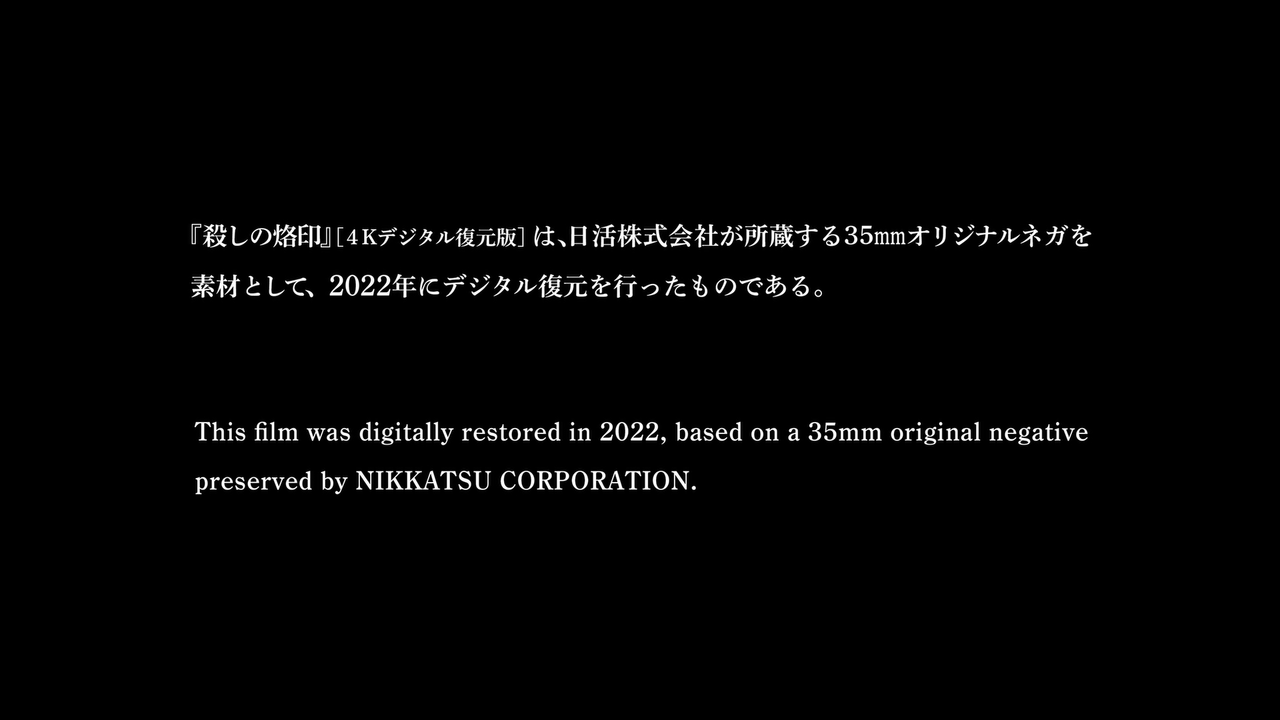
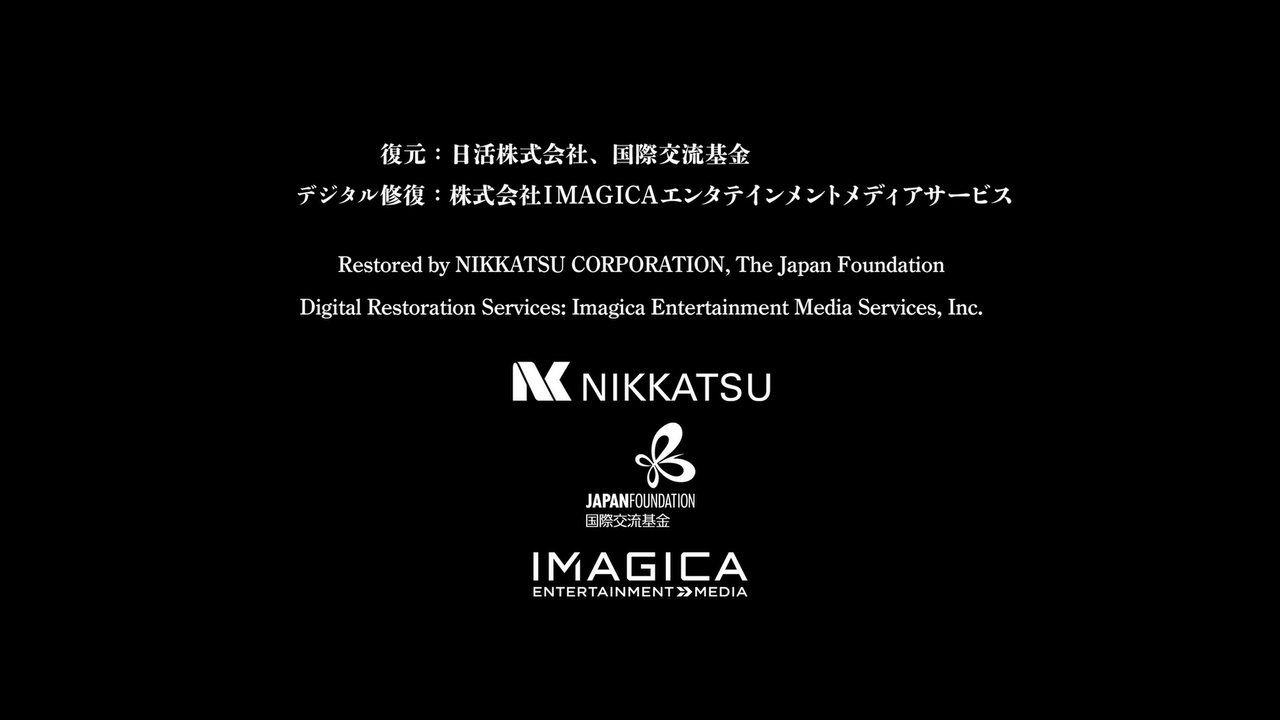
Then here's the comparison shots. I tried my best to match the frame, but for various reasons it didn't always match exactly.
NIKKATSU
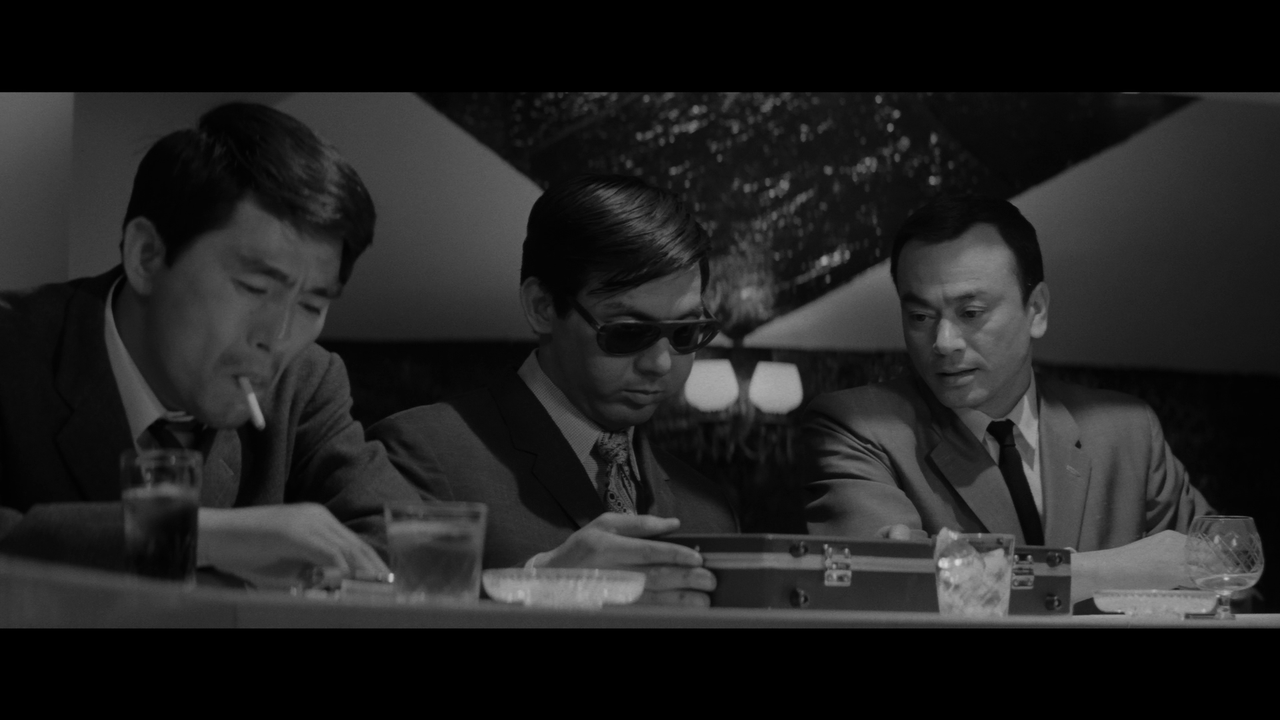
CRITERION
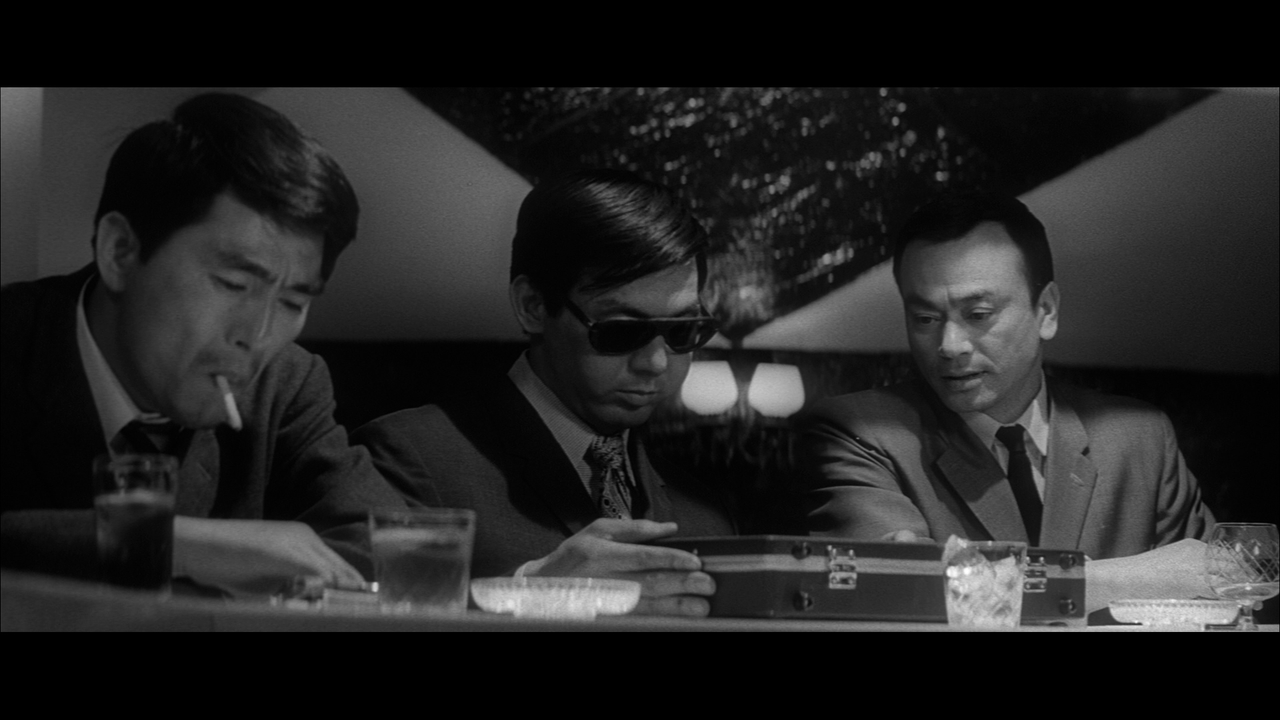
NIKKATSU
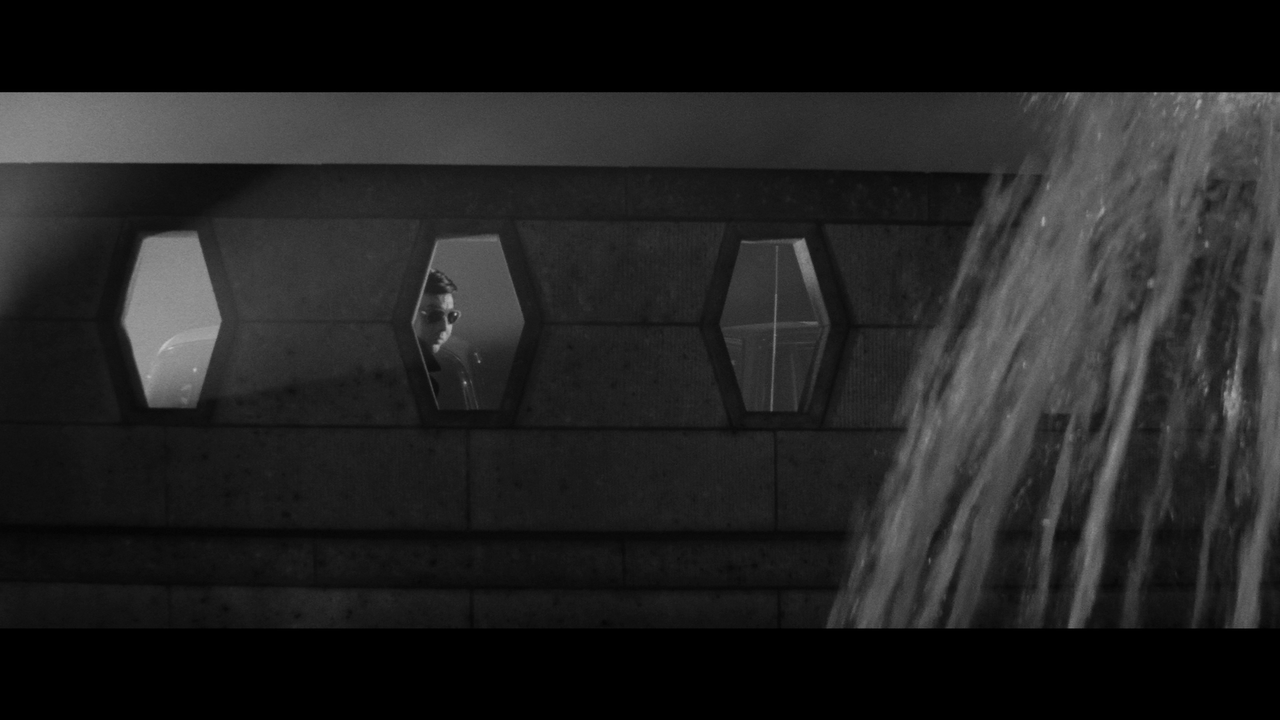
CRITERION
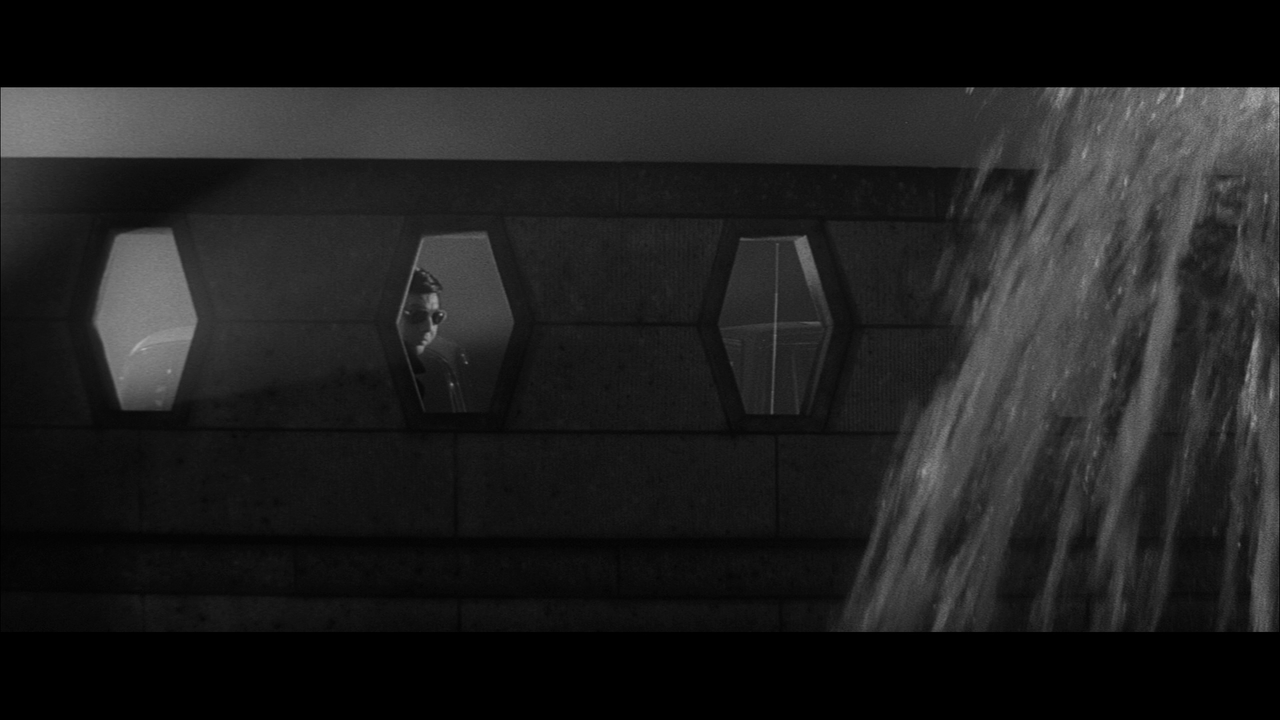
NIKKATSU
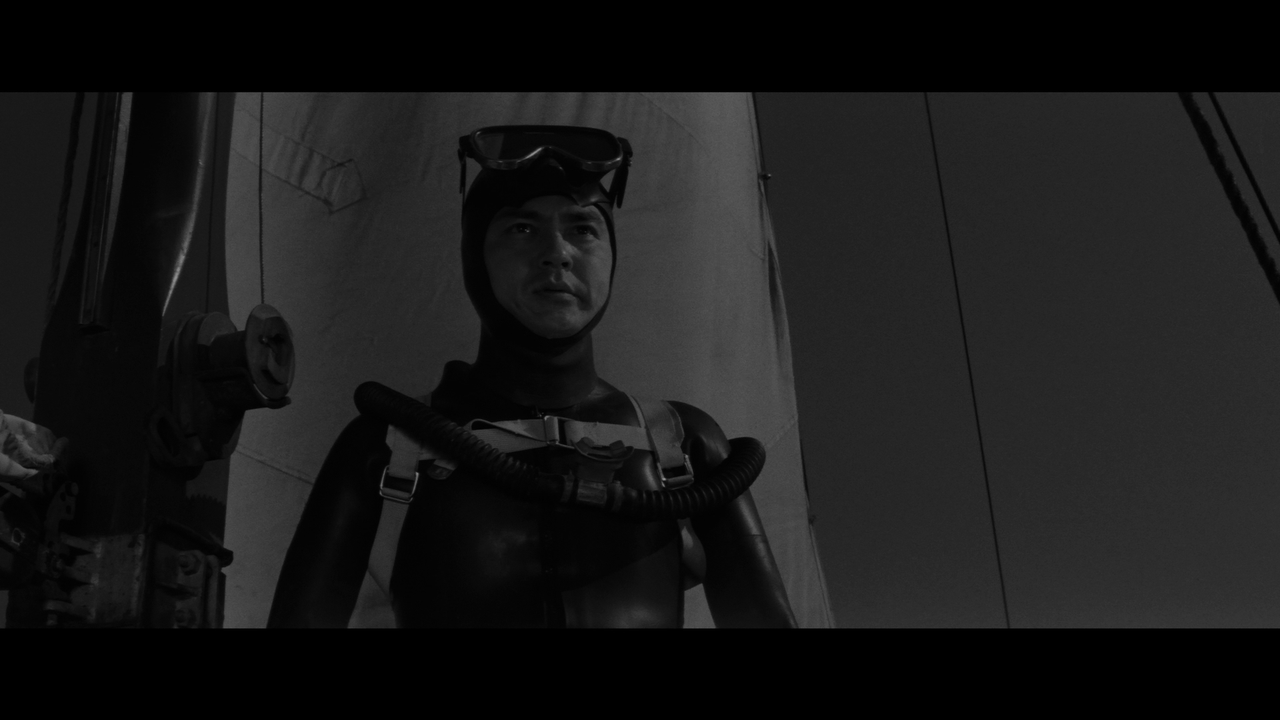
CRITERION
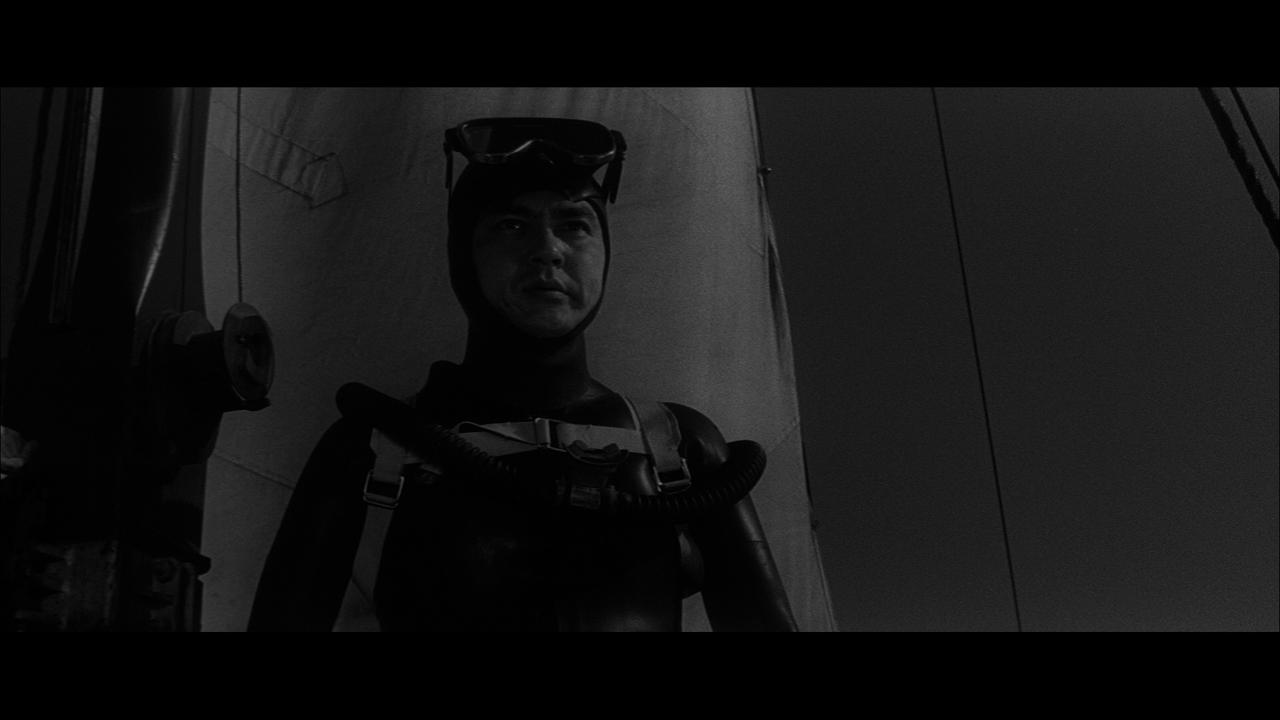
NIKKATSU

CRITERION
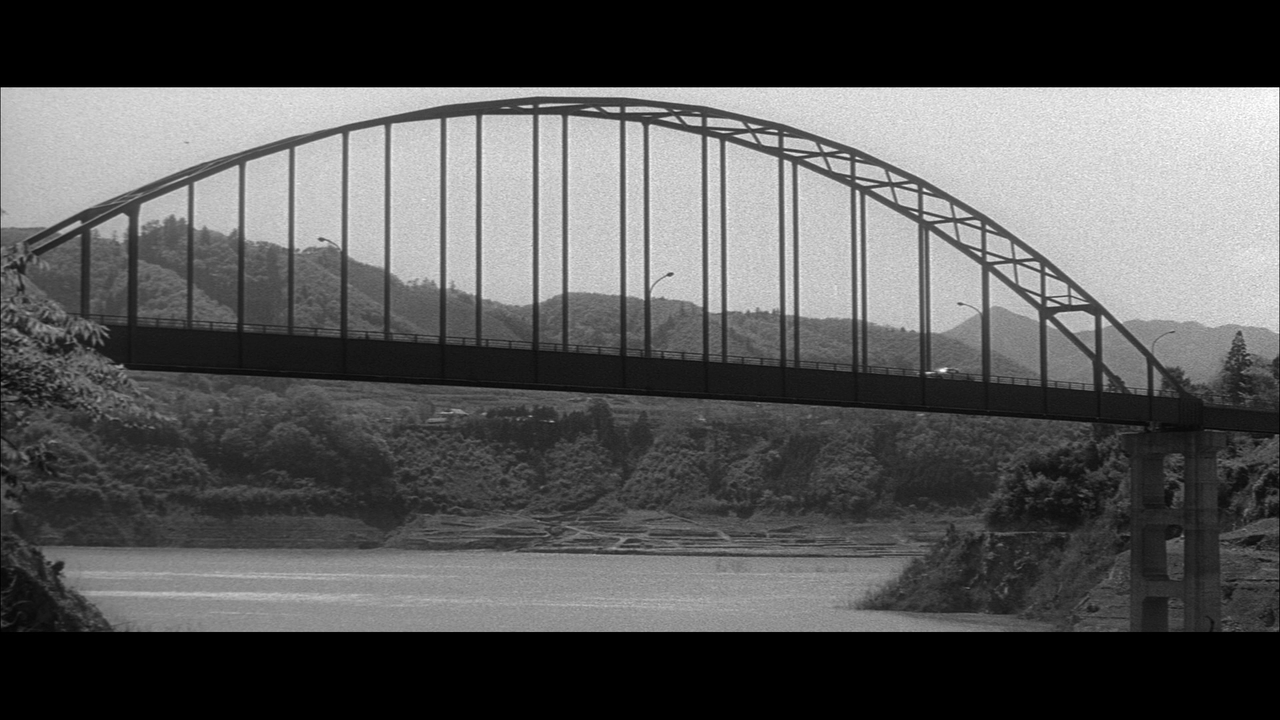
NIKKATSU

CRITERION
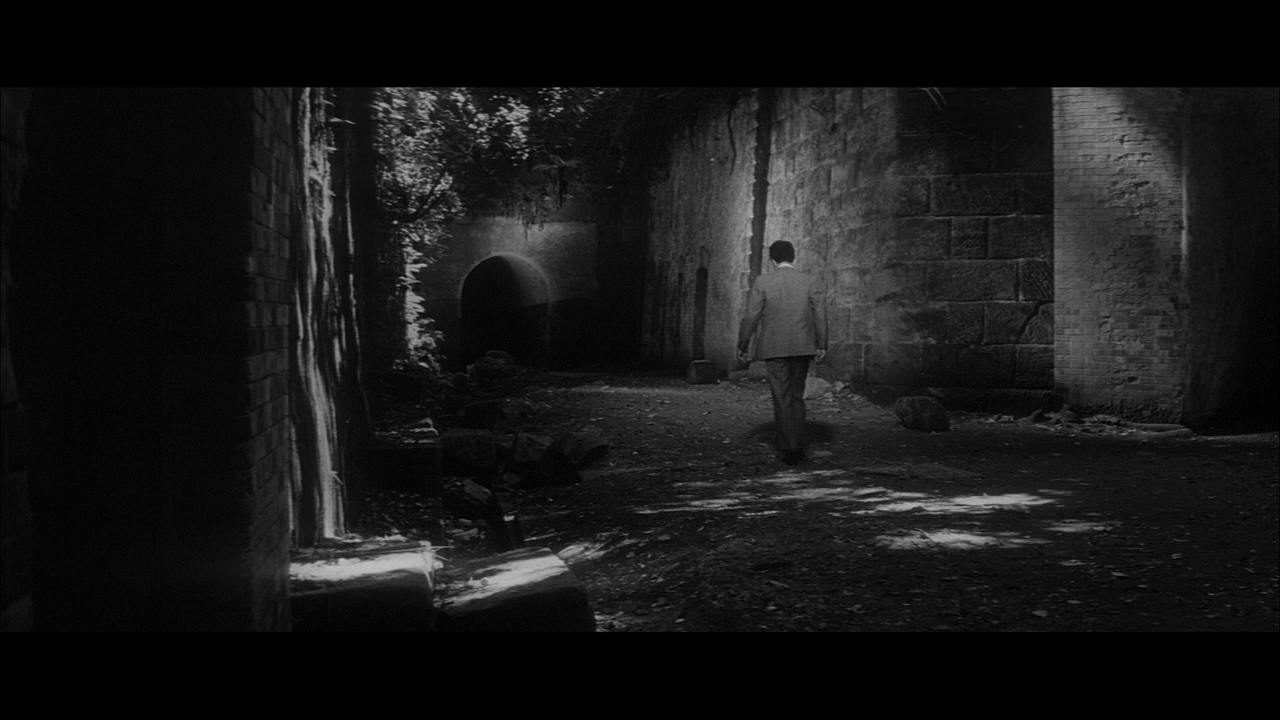
NIKKATSU
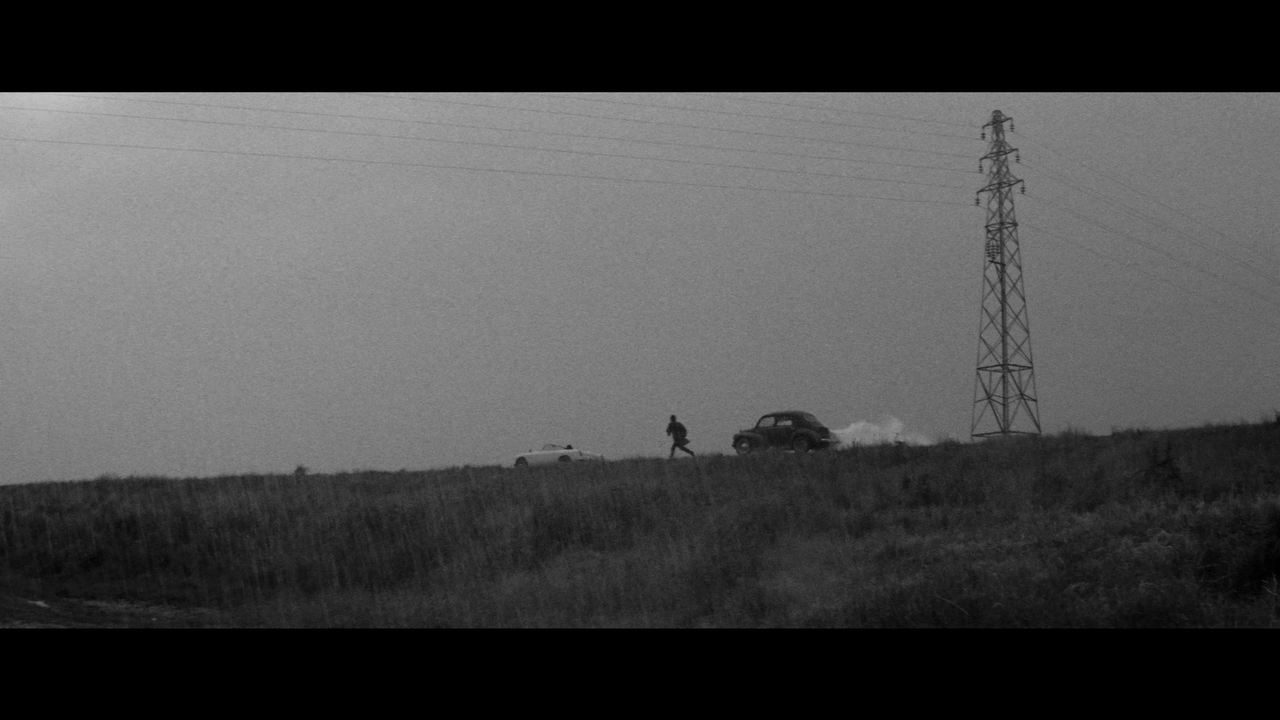
CRITERION

NIKKATSU

CRITERION
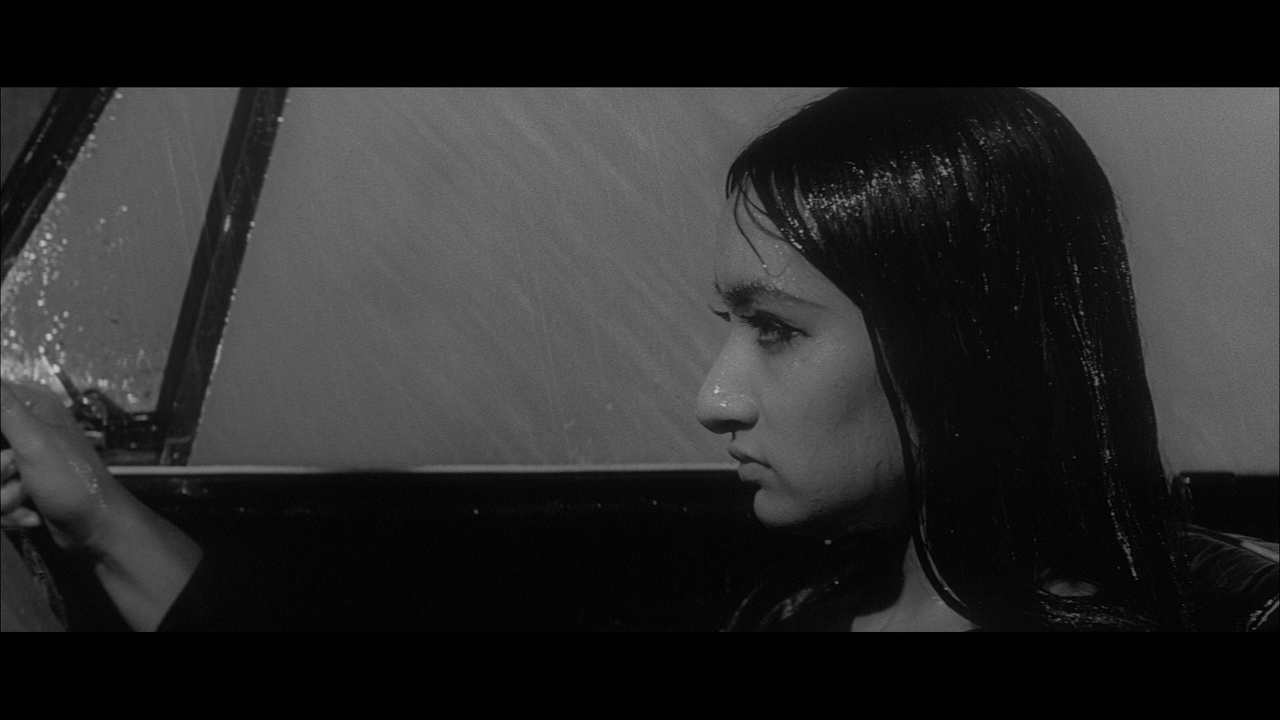
NIKKATSU

CRITERION
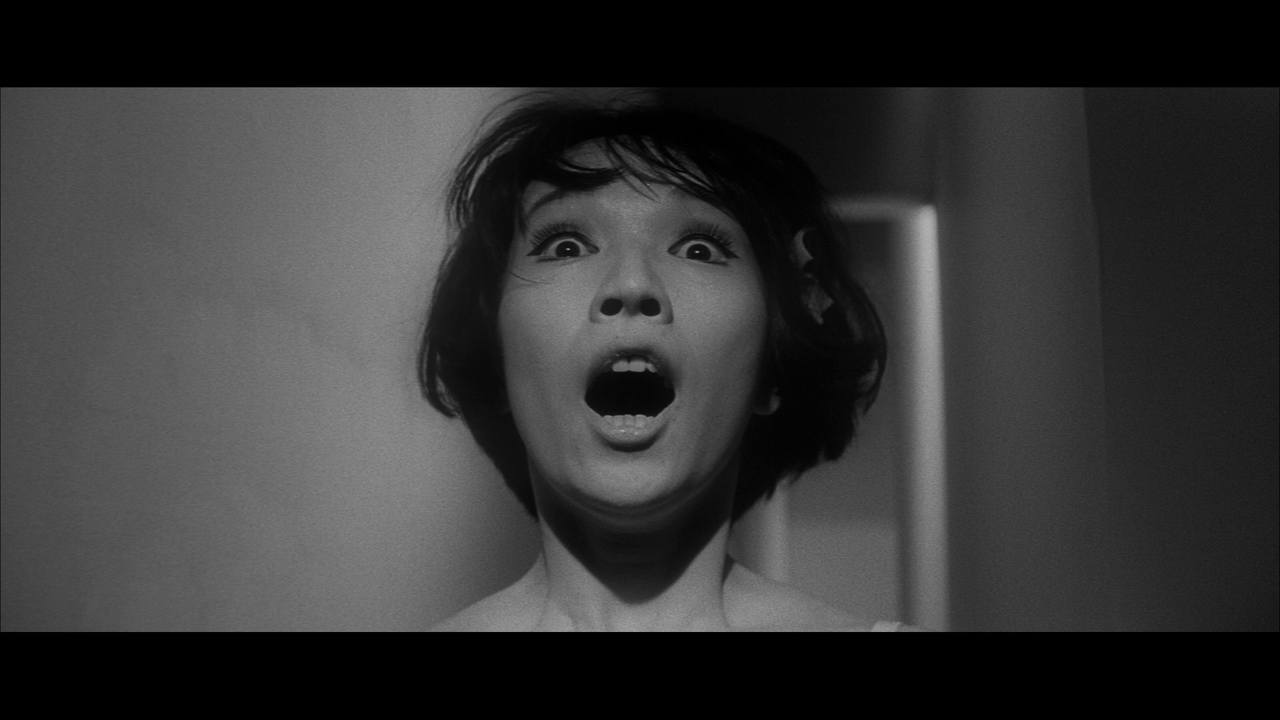
NIKKATSU
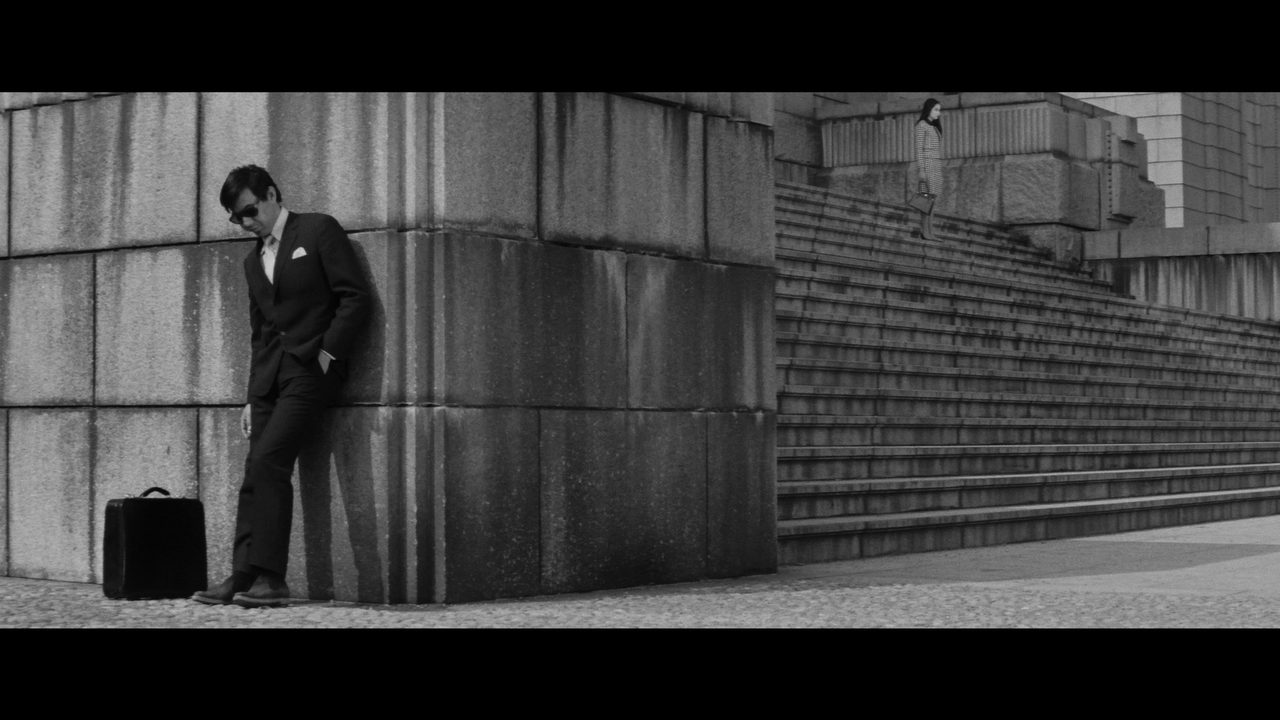
CRITERION
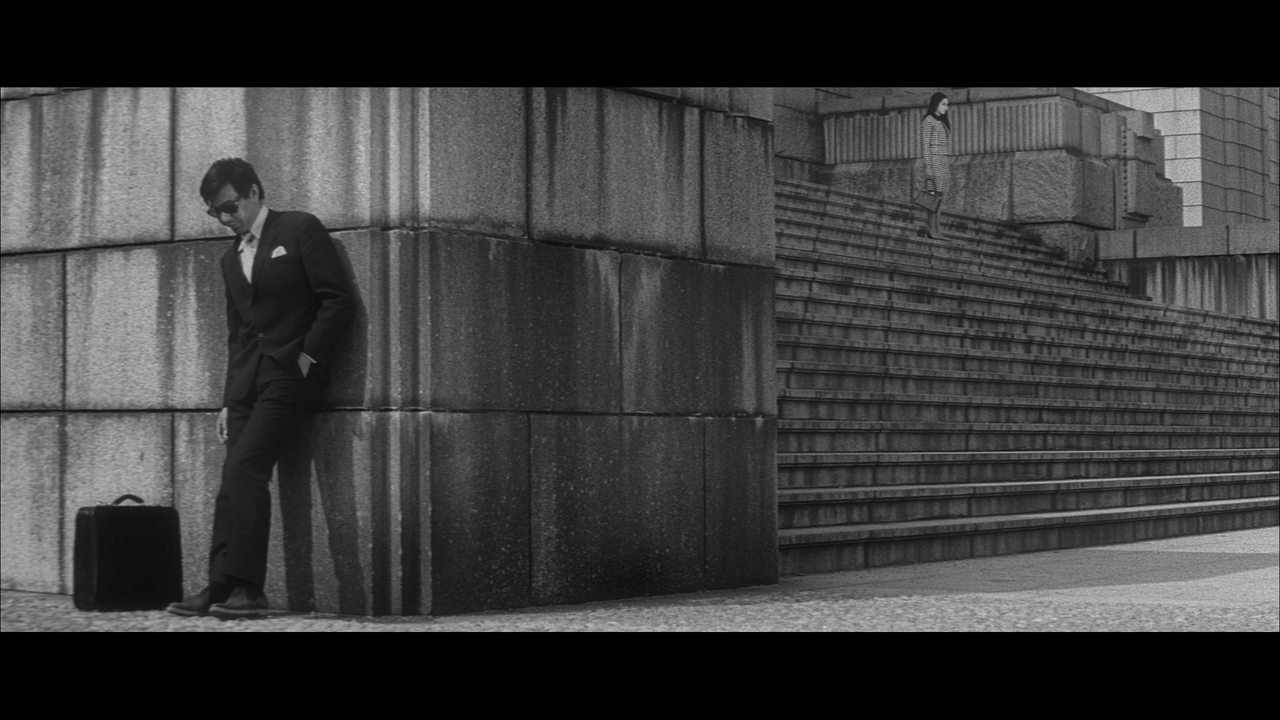
NIKKATSU

CRITERION
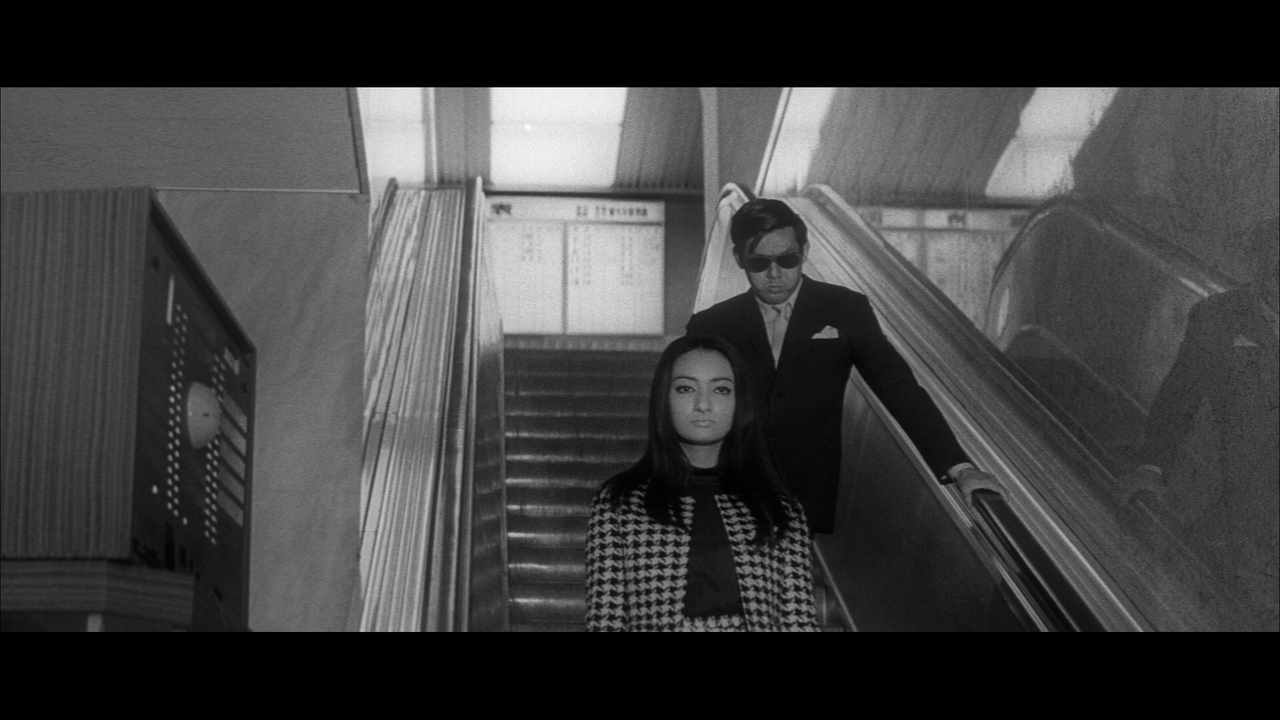
NIKKATSU
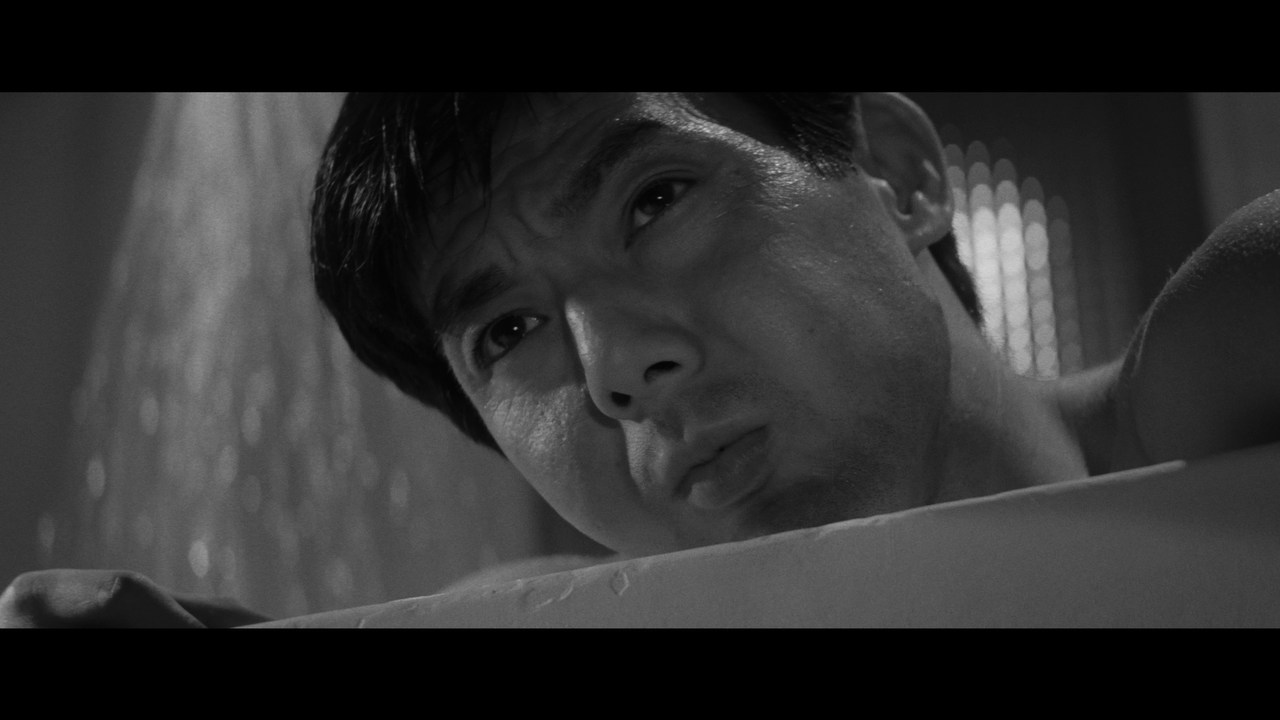
CRITERION
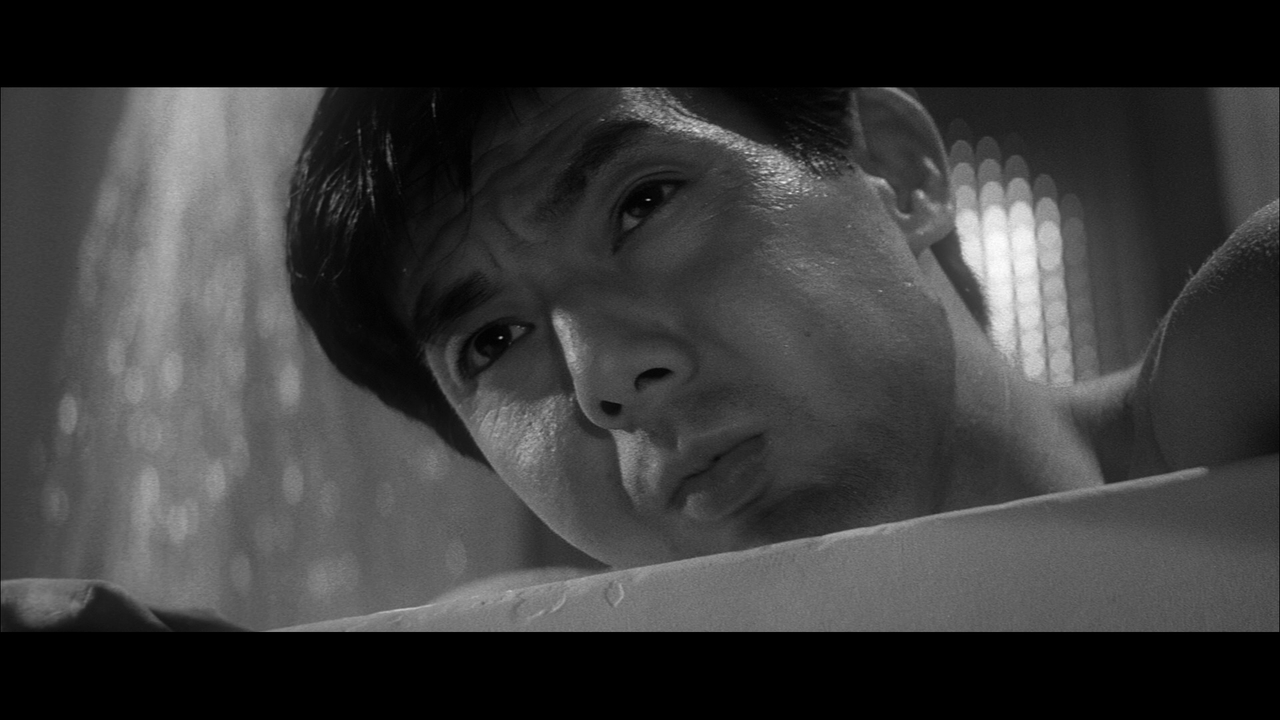
NIKKATSU

CRITERION
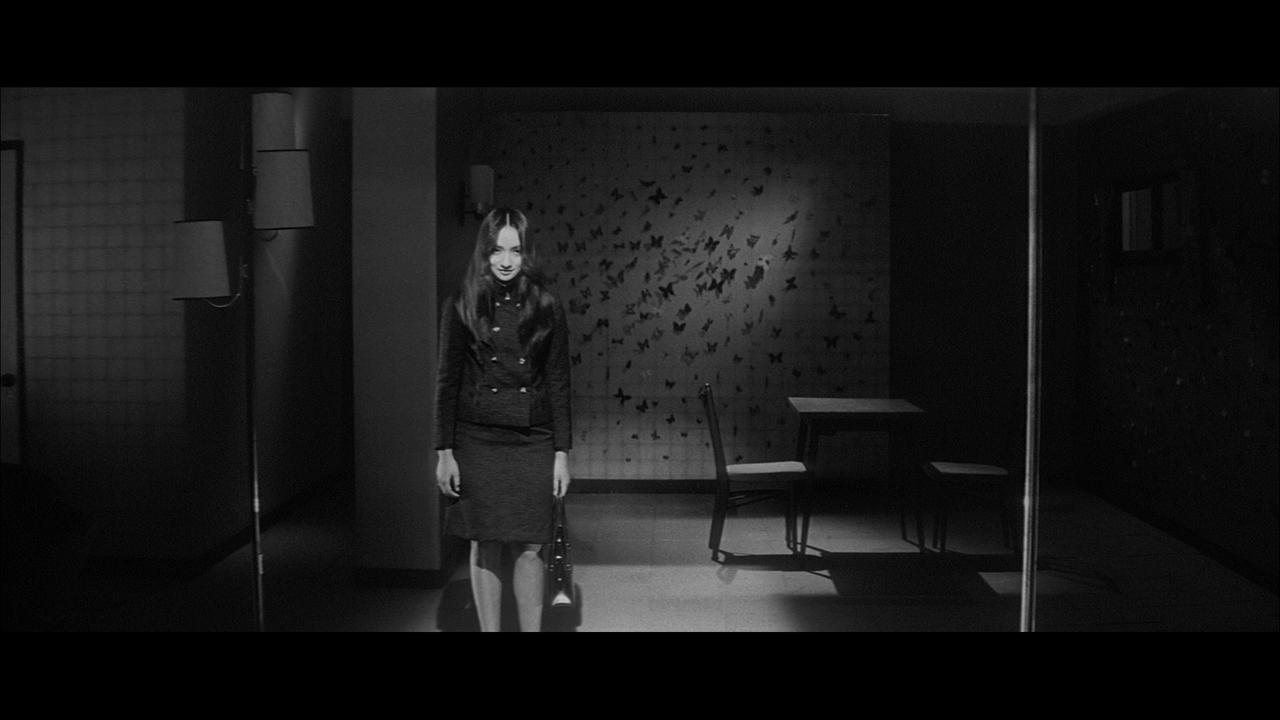
NIKKATSU
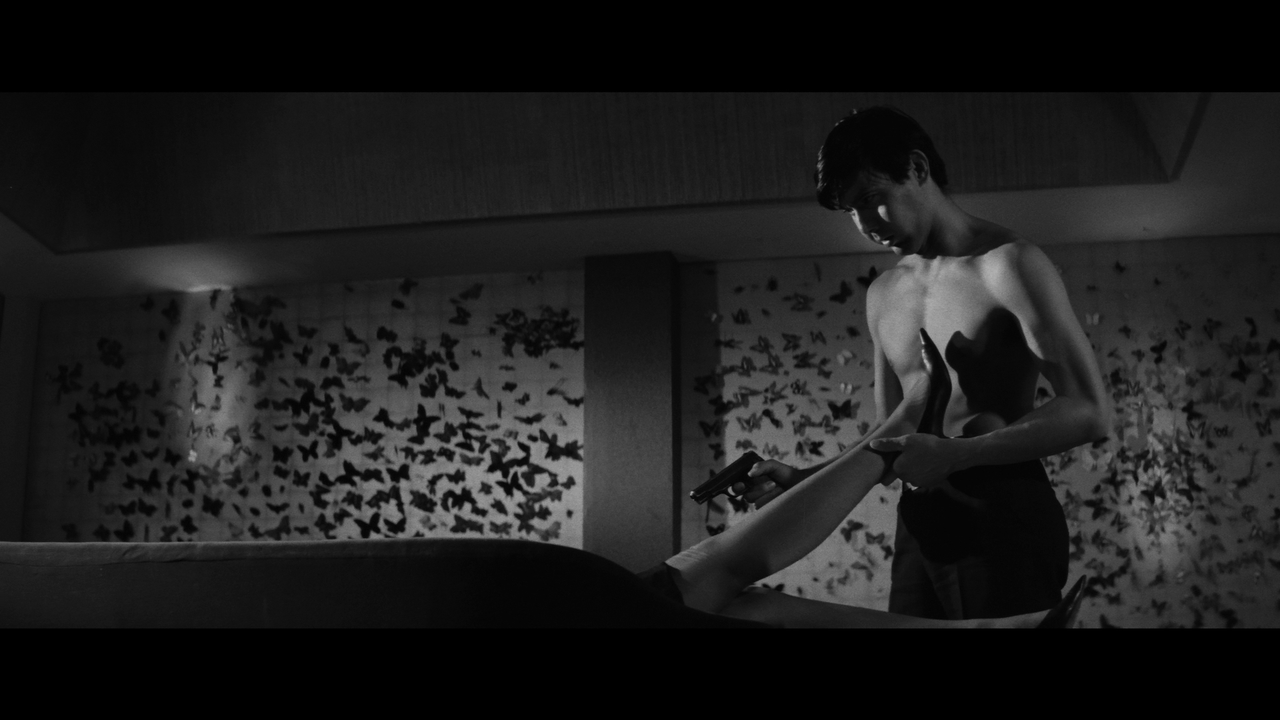
CRITERION
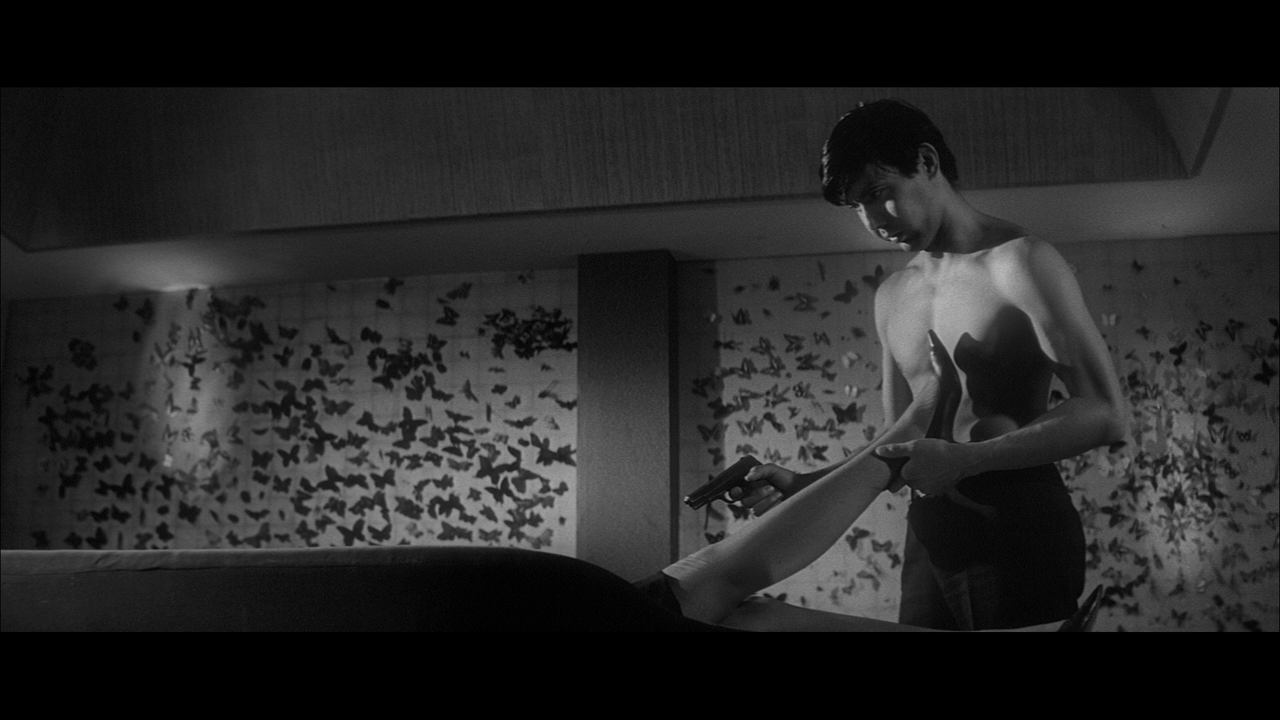
NIKKATSU
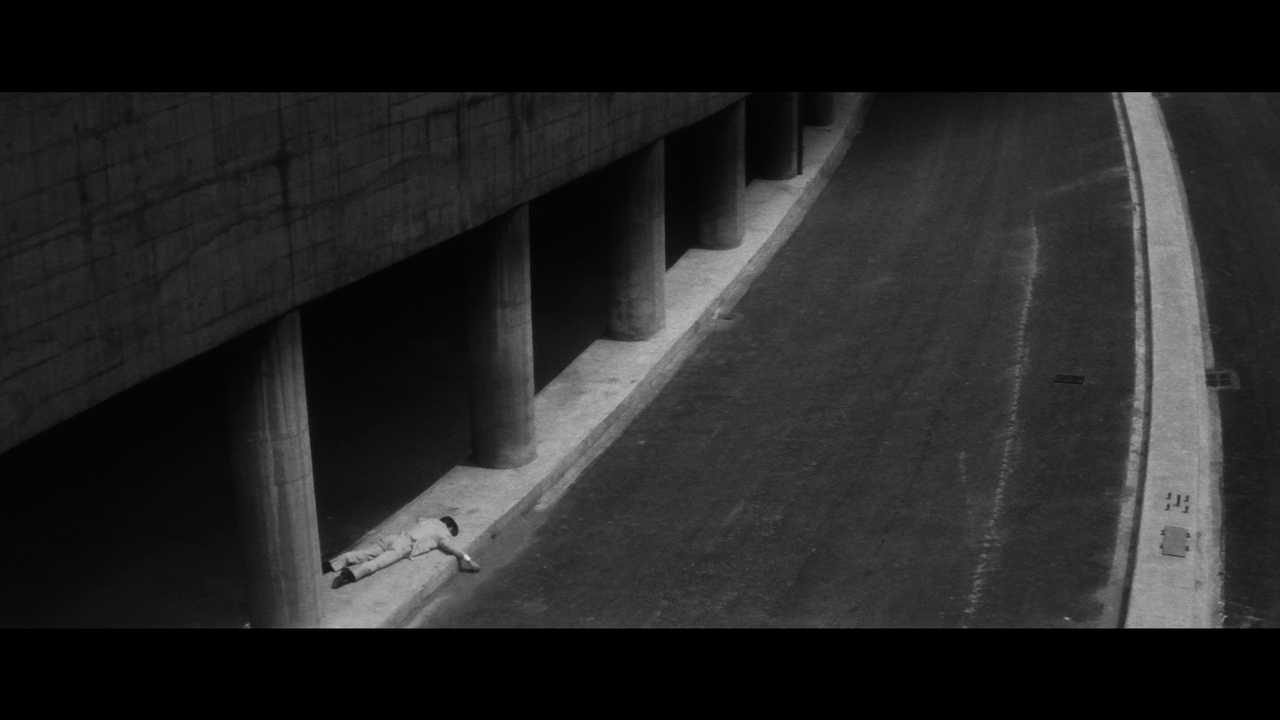
CRITERION
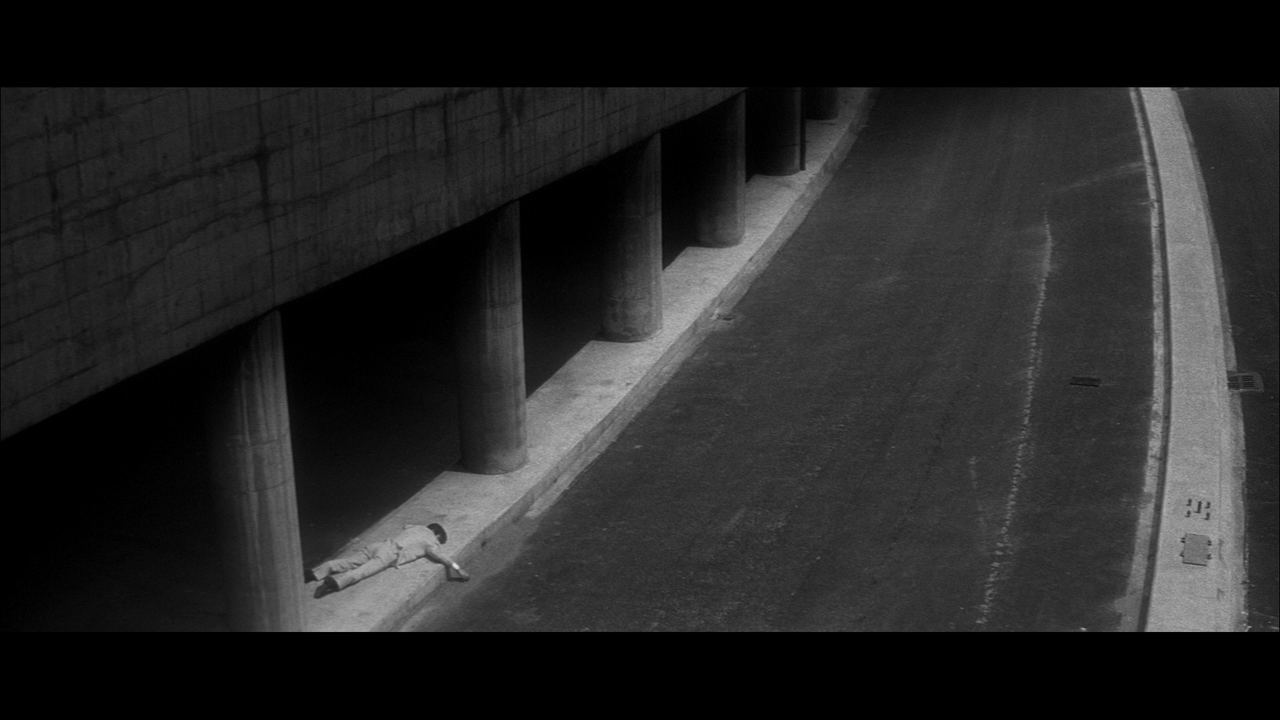
NIKKATSU
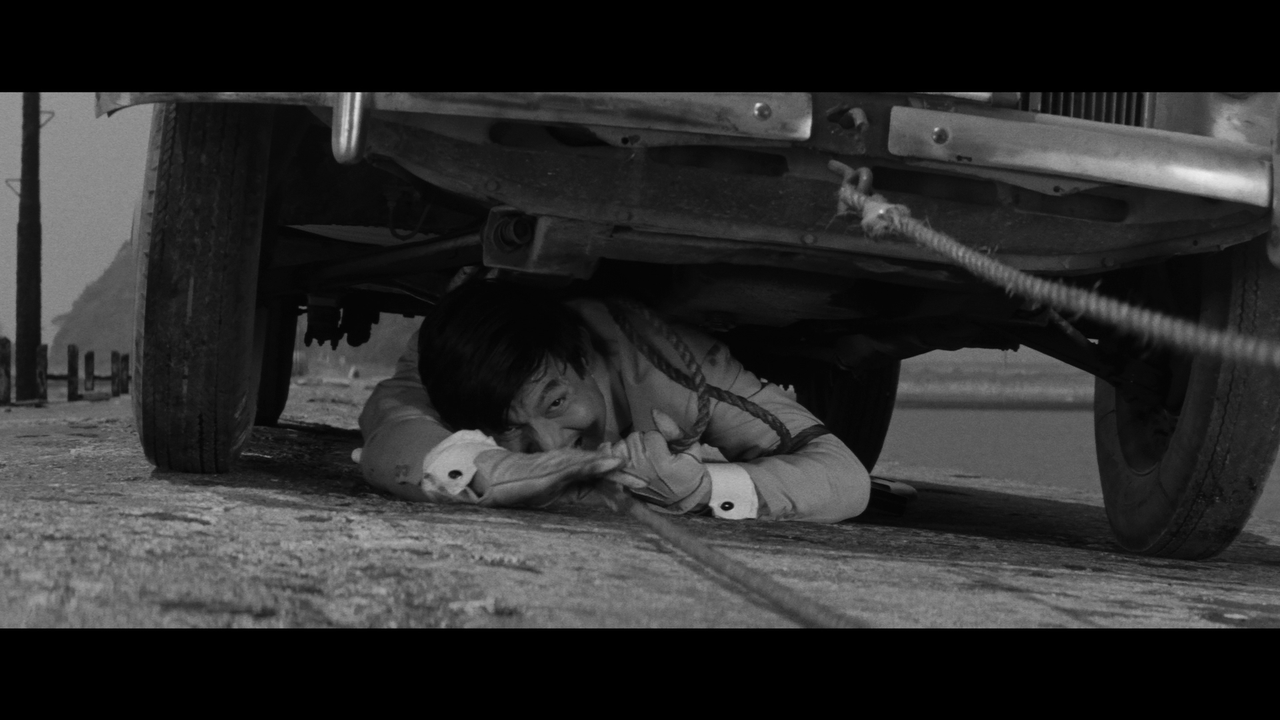
CRITERION

NIKKATSU

CRITERION
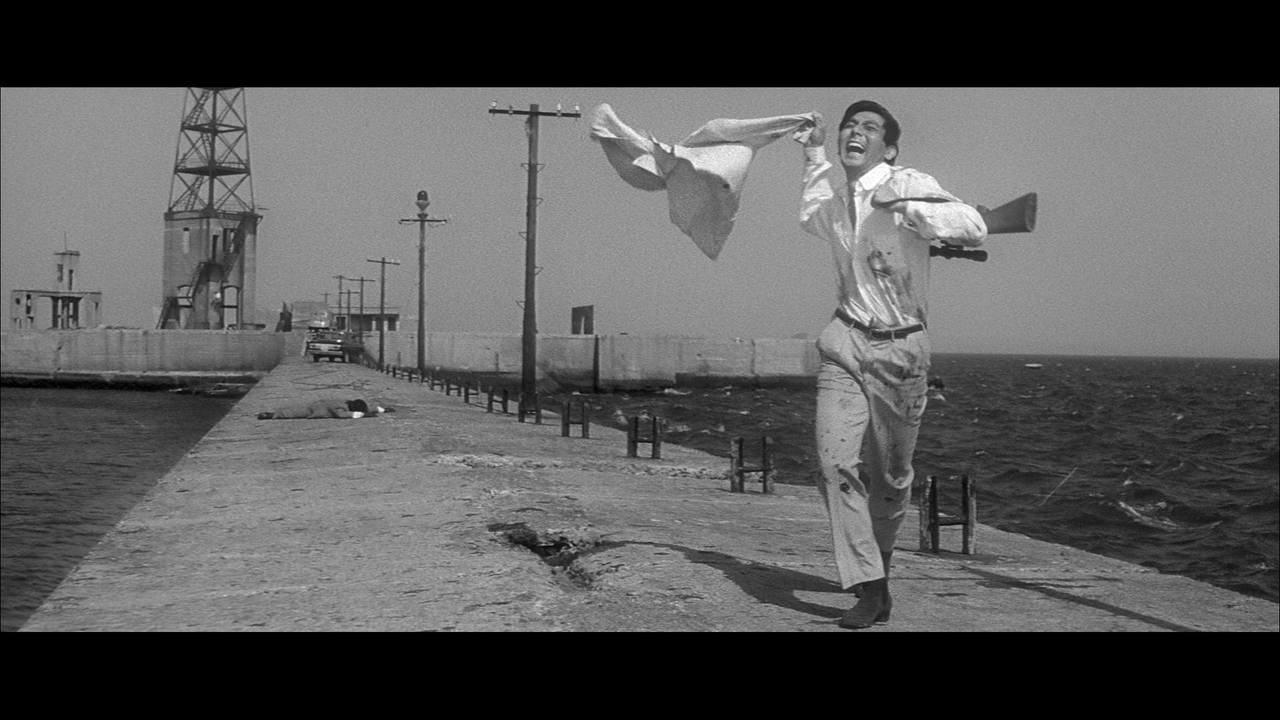
NIKKATSU
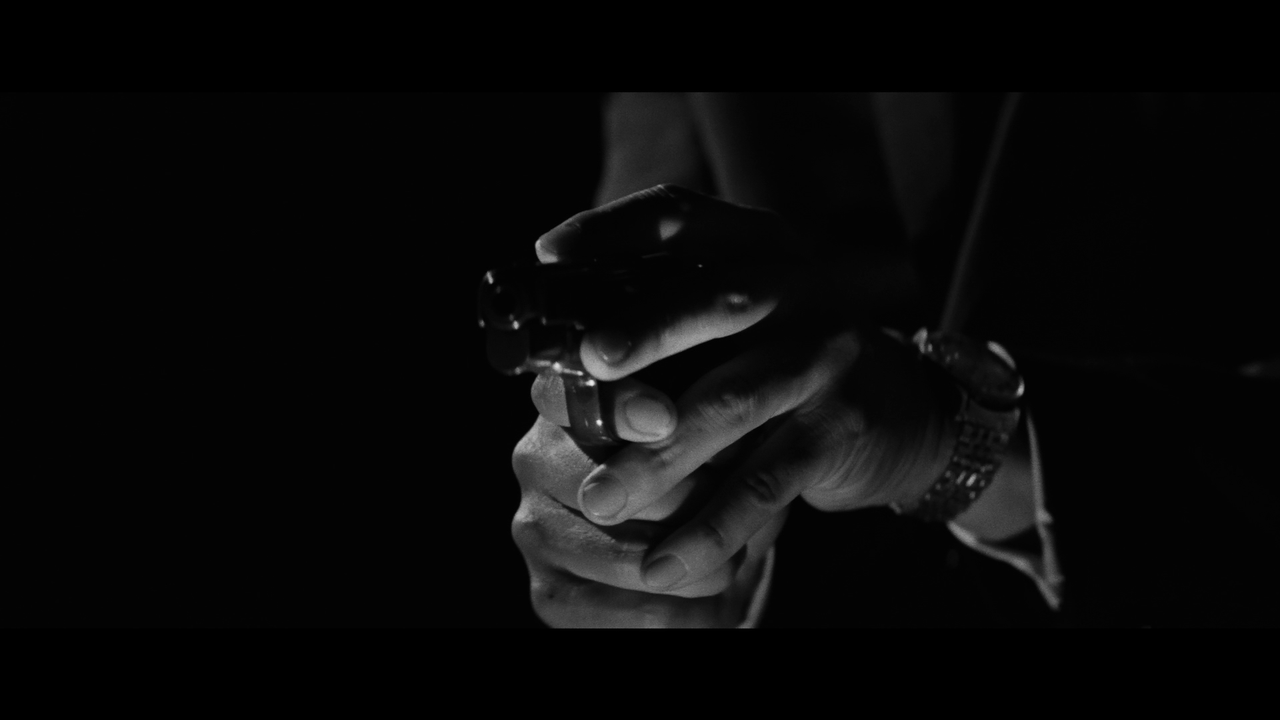
CRITERION
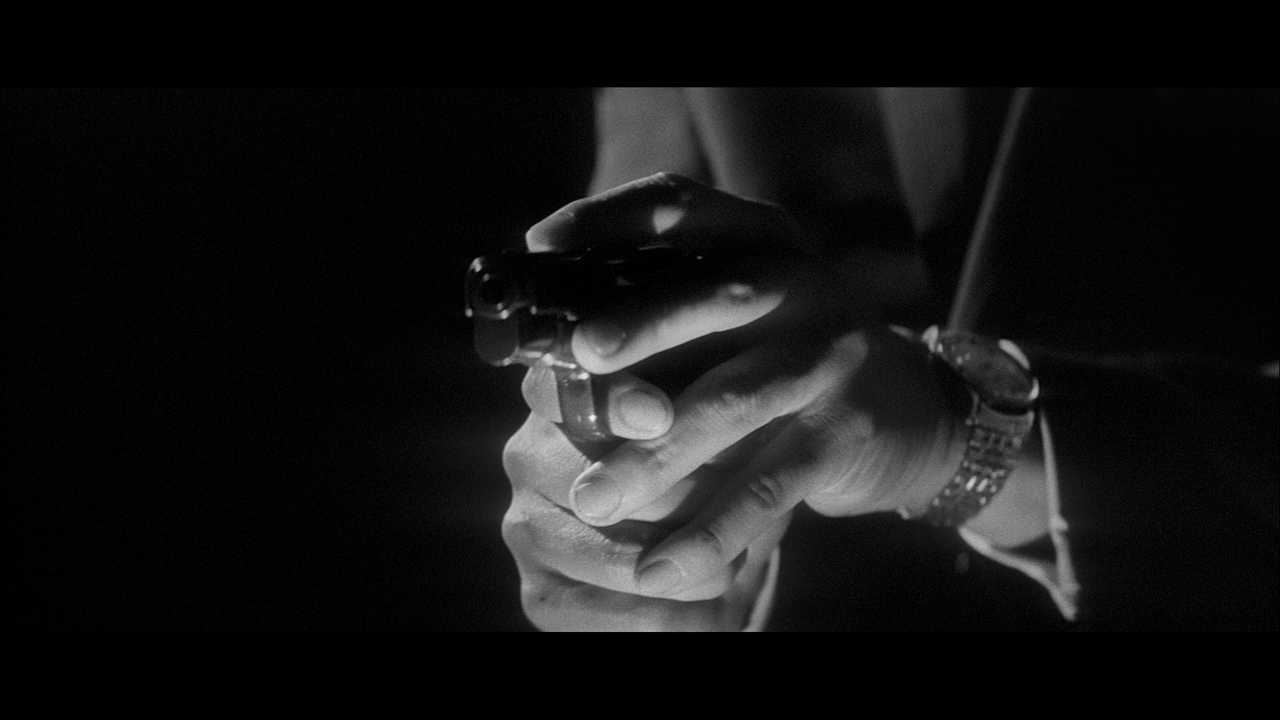
NIKKATSU
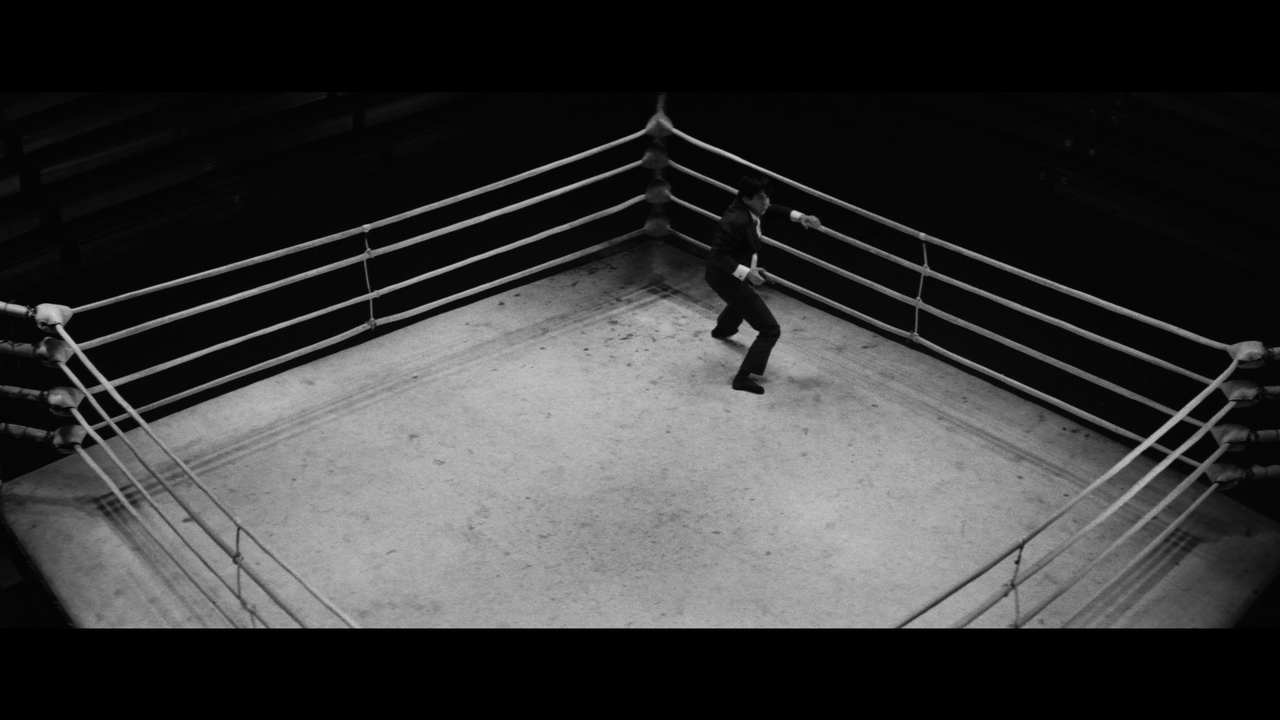
CRITERION

The Nikkatsu disc is prefaced by these three cards describing the digital restoration:



Then here's the comparison shots. I tried my best to match the frame, but for various reasons it didn't always match exactly.
NIKKATSU

CRITERION

NIKKATSU

CRITERION

NIKKATSU

CRITERION

NIKKATSU

CRITERION

NIKKATSU

CRITERION

NIKKATSU

CRITERION

NIKKATSU

CRITERION

NIKKATSU

CRITERION

NIKKATSU

CRITERION

NIKKATSU

CRITERION

NIKKATSU

CRITERION

NIKKATSU

CRITERION

NIKKATSU

CRITERION

NIKKATSU

CRITERION

NIKKATSU

CRITERION

NIKKATSU

CRITERION

NIKKATSU

CRITERION

NIKKATSU

CRITERION

- mhofmann
- Joined: Sun Dec 06, 2015 7:01 pm
Re: Seijun Suzuki
Isn't that comparison somewhat obsolete since we have a Criterion 4K UHD to compare to, which, I assume uses that newer restoration?
- feihong
- Joined: Thu Nov 04, 2004 12:20 pm
Re: Seijun Suzuki
Since I haven't upgraded to UHD, I frankly forgot that re-release even existed. I did find this post from a user in the Branded to Kill & Tokyo Drifter thread:
I suppose that's why I thought this comparison would be apropos. But I don't have the UHD anyway.
- feihong
- Joined: Thu Nov 04, 2004 12:20 pm
Re: Seijun Suzuki
I was able to open up the second set of Nikkatsu Suzuki blurays today, and had a look. I haven't got the disc info from my computer yet, but my Sony bluray player lists the two 4k scanned films, Carmen from Kawachi and Nude Girl with a Gun, as 1080/24p, and it lists the other films in the set as 1080/60p. I imagine that means that the discs are as in the first set, interlaced broadcast scans except for the 4k versions.
This is the set with more favorites for me amongst Suzuki's Nikkatsu pictures, but the quality of available materials is a little conspicuously lesser than that of the films in the first set. Kanto Wanderer––perhaps cinematographer Shigeyoshi Mine's most beautiful picture, looks just stunning. The picture looks quite sharp and long shots look better than I expected them to. Kanto Wanderer is a film which crackles in the cinema with subtle lighting schemes, and this disc does a good job replicating a lot of them. The color is also very exquisite. It doesn't look as sharp, and it doesn't have quite the depth of the 4k scanned films, but it looks very close to my eyes. Of the 4k scans, Nude Girl with a Gun looks tightest. The film has a lot of pops and scratches––moreso than in Love Letter in the previous set––but the image is otherwise very spectacular. I hope someone is able to subtitle this film soon; it's one of the very few Suzuki movies I haven't seen so far. The supporting cast augurs lots of Suzuki films to come––Mari Shiraki is the female lead, and you can see very young Hideaki Nitani and Jo Shishido as supporting players, behind Michitaro Mizushima, who also stars for Suzuki in Underworld Beauty and Take Aim at the Police Van. Apparently the plot is quite similar to Vertigo, which would come out the year after Suzuki's movie.
Carmen From Kawachi is the other 4k transfer, and it looks like it needs restoration pretty badly. There are large pops and scratches in the film, but more noticeably, the image is not very stable. Often when the shot cuts there is a sort of "jogging" of the new image before it stabilizes. The picture looks very sharp, and has a lot of depth, so there is a quality which can't be denied––and it's a great movie, but it seems like it's in been less well-taken-care-of than the early Suzuki movies in this and the previous set.
Gate of Flesh looks as good as Kanto Wanderer. Like that film, my player lists it as 1080/60p, and I presume that means its' interlaced––but the image is very strong nonetheless. I looked at the trailer to see if it was in higher definition––the trailers on the previous set were in 24p, unlike the features that weren't scanned in 4k. Here it was hard to tell, but it did look as if the trailer had a slight edge in sharpness and depth, but my player still listed it a 1080/60p, so I don't know what the deal is yet. There is a French blu ray of Gate of Flesh, which has been my go-to transfer for the movie so far. I haven't looked at it in a year or more, but I'll try and compare the two discs here when I get screencaps from them. Story of a Prostitute is the worst off of the whole set. It is 1080/60p, like the others, but the picture looks as soft as a VHS transfer. The movie does not look well. I've seen a beautiful, sharp print of this one in a theater, and there are two previous hi-def sources which are higher-quality, the Criterion Channel 720p version, and a French bluray. I assume the French bluray is 1080p, but the transfer on the French bluray is extremely dark and grungy, and the image is scanned in very noticeably. The Criterion Channel transfer is much less high-contrast than the French disc, and features a lot more picture area––it resembles my theatrical experience much more closely than does the French disc. I'll get screencaps for these as well. This is a set full of some of Suzuki's greatest movies, and Story of a Prostitute is up there in the top echelon for me, so this one is a significant disappointment, even moreso than what I expected after the first set's interlaced transfers. Such a shame.
The Bastard is the last movie in the set. This one looks a lot closer in quality to Fighting Elegy on the first set––it's the first one I'm seeing on this set where the interlacing––if that is what's happening on these discs––is really apparent. The contrast in the image is resplendent, but you can see some softening and moire on the characters' faces very often. I plan to compare this one with the Arrow disc. I'm not sure if the trailer is better quality––it kind of looks like it is, and some shots which are rife with pops and scratches on the feature are very pristine on the trailer.
All the movies are on separate discs this time. There is another disc with another set of Suzuki interviews. Most of the discs feature a trailer, and no other features. There is another booklet, which again includes these beautiful, scanned pages of Suzuki's shooting scripts, covered––in some cases almost obscured by notes and rewrites. Clearly he was adapting the drama as he saw fit, and his claim he was forbidden from changing a word of his scripts after Eight Hours of Fear was more an admonishment than a directive anyone enforced.
So, another set full of disappointments and virtues, jostling against one another. A shame Nikkatsu couldn't have gone bigger for Suzuki's centenary––I don't think it would be remiss to have another set or two––it's not as if there aren't Suzuki movies for it––most of which are currently playing on Amazon Prime Video in Japan. I plan to get the Taisho Trilogy 4k/bluray set when it comes out next month. Today I just discovered a new scholarly book in English on Suzuki––Negative, Nonsensical, and Non-Conformist: The Films of Suzuki Seijun, by Peter A. Yacavone. So this centenary is setting me back financially. But it's great to see more Suzuki stuff out there. Too bad Criterion couldn't do something special for the occasion.
This is the set with more favorites for me amongst Suzuki's Nikkatsu pictures, but the quality of available materials is a little conspicuously lesser than that of the films in the first set. Kanto Wanderer––perhaps cinematographer Shigeyoshi Mine's most beautiful picture, looks just stunning. The picture looks quite sharp and long shots look better than I expected them to. Kanto Wanderer is a film which crackles in the cinema with subtle lighting schemes, and this disc does a good job replicating a lot of them. The color is also very exquisite. It doesn't look as sharp, and it doesn't have quite the depth of the 4k scanned films, but it looks very close to my eyes. Of the 4k scans, Nude Girl with a Gun looks tightest. The film has a lot of pops and scratches––moreso than in Love Letter in the previous set––but the image is otherwise very spectacular. I hope someone is able to subtitle this film soon; it's one of the very few Suzuki movies I haven't seen so far. The supporting cast augurs lots of Suzuki films to come––Mari Shiraki is the female lead, and you can see very young Hideaki Nitani and Jo Shishido as supporting players, behind Michitaro Mizushima, who also stars for Suzuki in Underworld Beauty and Take Aim at the Police Van. Apparently the plot is quite similar to Vertigo, which would come out the year after Suzuki's movie.
Carmen From Kawachi is the other 4k transfer, and it looks like it needs restoration pretty badly. There are large pops and scratches in the film, but more noticeably, the image is not very stable. Often when the shot cuts there is a sort of "jogging" of the new image before it stabilizes. The picture looks very sharp, and has a lot of depth, so there is a quality which can't be denied––and it's a great movie, but it seems like it's in been less well-taken-care-of than the early Suzuki movies in this and the previous set.
Gate of Flesh looks as good as Kanto Wanderer. Like that film, my player lists it as 1080/60p, and I presume that means its' interlaced––but the image is very strong nonetheless. I looked at the trailer to see if it was in higher definition––the trailers on the previous set were in 24p, unlike the features that weren't scanned in 4k. Here it was hard to tell, but it did look as if the trailer had a slight edge in sharpness and depth, but my player still listed it a 1080/60p, so I don't know what the deal is yet. There is a French blu ray of Gate of Flesh, which has been my go-to transfer for the movie so far. I haven't looked at it in a year or more, but I'll try and compare the two discs here when I get screencaps from them. Story of a Prostitute is the worst off of the whole set. It is 1080/60p, like the others, but the picture looks as soft as a VHS transfer. The movie does not look well. I've seen a beautiful, sharp print of this one in a theater, and there are two previous hi-def sources which are higher-quality, the Criterion Channel 720p version, and a French bluray. I assume the French bluray is 1080p, but the transfer on the French bluray is extremely dark and grungy, and the image is scanned in very noticeably. The Criterion Channel transfer is much less high-contrast than the French disc, and features a lot more picture area––it resembles my theatrical experience much more closely than does the French disc. I'll get screencaps for these as well. This is a set full of some of Suzuki's greatest movies, and Story of a Prostitute is up there in the top echelon for me, so this one is a significant disappointment, even moreso than what I expected after the first set's interlaced transfers. Such a shame.
The Bastard is the last movie in the set. This one looks a lot closer in quality to Fighting Elegy on the first set––it's the first one I'm seeing on this set where the interlacing––if that is what's happening on these discs––is really apparent. The contrast in the image is resplendent, but you can see some softening and moire on the characters' faces very often. I plan to compare this one with the Arrow disc. I'm not sure if the trailer is better quality––it kind of looks like it is, and some shots which are rife with pops and scratches on the feature are very pristine on the trailer.
All the movies are on separate discs this time. There is another disc with another set of Suzuki interviews. Most of the discs feature a trailer, and no other features. There is another booklet, which again includes these beautiful, scanned pages of Suzuki's shooting scripts, covered––in some cases almost obscured by notes and rewrites. Clearly he was adapting the drama as he saw fit, and his claim he was forbidden from changing a word of his scripts after Eight Hours of Fear was more an admonishment than a directive anyone enforced.
So, another set full of disappointments and virtues, jostling against one another. A shame Nikkatsu couldn't have gone bigger for Suzuki's centenary––I don't think it would be remiss to have another set or two––it's not as if there aren't Suzuki movies for it––most of which are currently playing on Amazon Prime Video in Japan. I plan to get the Taisho Trilogy 4k/bluray set when it comes out next month. Today I just discovered a new scholarly book in English on Suzuki––Negative, Nonsensical, and Non-Conformist: The Films of Suzuki Seijun, by Peter A. Yacavone. So this centenary is setting me back financially. But it's great to see more Suzuki stuff out there. Too bad Criterion couldn't do something special for the occasion.
Last edited by feihong on Mon Apr 01, 2024 5:09 pm, edited 1 time in total.
- senseabove
- Joined: Wed Dec 02, 2015 3:07 am
Re: Seijun Suzuki
Keep us updated on that! Would import that in a heartbeat if it turns out well.feihong wrote: ↑Tue Mar 26, 2024 7:22 pmI plan to get the Taisho Trilogy 4k/bluray set when it comes out next month.
- feihong
- Joined: Thu Nov 04, 2004 12:20 pm
Re: Seijun Suzuki
Just got the Taisho Trilogy UHD/BluRay set, released by something called TC Entertainment this time around––so now I've got to get a UHD drive. Can anyone recommend a good external drive you can use on a Mac? Gonna start looking tonight.
I did check the blu ray discs, and did an informal comparison with the Arrow set. The new restoration looks sharper, with much finer grain reproduction––at least, to my eyes. The grain looks very, very fine, but the images look quite sharp and detailed, quite full of depth. All the little pops and scratches on the Arrow discs are gone, and in general the new set looks subtle-y brighter, cleaner, less grungy––without sacrificing the very noir-ish shadows of the films. The first two films are exceptionally noir-ish in their lighting, being shot by Kazue Nagatsuka.
With the extended reading I've been able to do recently, checking the old Bug! Magazine interview and reading the new Suzuki book by Peter Yacavone, I've found out a lot more about Nagatsuka. Nagatsuka was a dp as early as the late 1920s, initially shooting silent movies. For the first half of his career he mostly worked for Tokyo Eiga, which eventually was renamed Toei. In the mid-50s he seemed to move mostly over to Nikkatsu, where he worked as the dp for Suzuki's Nikkatsu mentor, Hiroshi Noguchi. Noguchi was a director prior to WWII, who returned after the war and was willing to accept a downgrade to AD to escape Shochiku, along with Suzuki, Immamura, Koreyoshi Kurahara, and others, and join Nikkatsu. Noguchi was quickly promoted to director again, and worked with Suzuki on a series of films in which he basically created Nikkatsu's version of the hard-boiled urban crime story (a famous one was the Yujiro Ishihara vehicle, Song of the Underworld, which Suzuki later remade and significantly transposed into Kanto Wanderer). When Suzuki was promoted to director, his crew came largely from Noguchi's group; Akira Suzuki, the editor on many of Noguchi's movies, became Suzuki's editor on most of his films going forward, even into the indie era––Akira Suzuki also edited for Koreyoshi Kurahara. Kazue Nagatsuka worked on Suzuki's movies frequently, missing every 3rd or 4th picture in order to work for Noguchi (Nagatsuka's assistant, Shigeyoshi Mine, shot most of Suzuki's films when Nagatsuka wasn't available). After Suzuki was fired for Branded to Kill (which Nagatsuka lensed), Nagatsuka stayed on for one more movie, Massacre Gun, before retiring. But then, 12 years later, he came out of retirement to shoot Zigeunerweisen and Mirage Theater––he died, it seems, almost immediately afterwards. What a career. Often Takeo Kimura is identified as the essential collaborator for Suzuki, but In the Bug! interview, Suzuki talks about Nagatsuka as being the collaborator most valuable in terms of creating a style (he also, fascinatingly, identifies The Wind of Youth Group Go Over the Mountain Pass as his favorite film he made at Nikkatsu, and the best experience there––and even though he had just recently called star Koji Wada a spoiled brat in the Asian Cult Cinema interview, he speaks of Wada, not at length, but with some respect in the Bug! article). I don't know why I love finding out stuff like this; I guess I want to picture these films being made, by my favorite filmmaker.
It looks to my eyes like the blu-ray images are all improvements over the Arrow discs, though perhaps not overwhelming improvements. Probably the biggest improvement is Yumeji, where textures of water and cloth and paper just glisten and glow. The image looks just a lot more solid with the improved detail and balance. There are no features on the discs, so far as I can see––no subtitles, no additional audio options. There is a lovely little booklet, which contains more pictures of Suzuki shooting stuff––including one where he is actually sitting on the ground next to the camera, as he reportedly did during takes.
Anyway, I'm going to try and find a UHD player and see if I can get some screencaptures. I have a good feeling so far; the restoration makes me excited about these films all over again.
I did check the blu ray discs, and did an informal comparison with the Arrow set. The new restoration looks sharper, with much finer grain reproduction––at least, to my eyes. The grain looks very, very fine, but the images look quite sharp and detailed, quite full of depth. All the little pops and scratches on the Arrow discs are gone, and in general the new set looks subtle-y brighter, cleaner, less grungy––without sacrificing the very noir-ish shadows of the films. The first two films are exceptionally noir-ish in their lighting, being shot by Kazue Nagatsuka.
With the extended reading I've been able to do recently, checking the old Bug! Magazine interview and reading the new Suzuki book by Peter Yacavone, I've found out a lot more about Nagatsuka. Nagatsuka was a dp as early as the late 1920s, initially shooting silent movies. For the first half of his career he mostly worked for Tokyo Eiga, which eventually was renamed Toei. In the mid-50s he seemed to move mostly over to Nikkatsu, where he worked as the dp for Suzuki's Nikkatsu mentor, Hiroshi Noguchi. Noguchi was a director prior to WWII, who returned after the war and was willing to accept a downgrade to AD to escape Shochiku, along with Suzuki, Immamura, Koreyoshi Kurahara, and others, and join Nikkatsu. Noguchi was quickly promoted to director again, and worked with Suzuki on a series of films in which he basically created Nikkatsu's version of the hard-boiled urban crime story (a famous one was the Yujiro Ishihara vehicle, Song of the Underworld, which Suzuki later remade and significantly transposed into Kanto Wanderer). When Suzuki was promoted to director, his crew came largely from Noguchi's group; Akira Suzuki, the editor on many of Noguchi's movies, became Suzuki's editor on most of his films going forward, even into the indie era––Akira Suzuki also edited for Koreyoshi Kurahara. Kazue Nagatsuka worked on Suzuki's movies frequently, missing every 3rd or 4th picture in order to work for Noguchi (Nagatsuka's assistant, Shigeyoshi Mine, shot most of Suzuki's films when Nagatsuka wasn't available). After Suzuki was fired for Branded to Kill (which Nagatsuka lensed), Nagatsuka stayed on for one more movie, Massacre Gun, before retiring. But then, 12 years later, he came out of retirement to shoot Zigeunerweisen and Mirage Theater––he died, it seems, almost immediately afterwards. What a career. Often Takeo Kimura is identified as the essential collaborator for Suzuki, but In the Bug! interview, Suzuki talks about Nagatsuka as being the collaborator most valuable in terms of creating a style (he also, fascinatingly, identifies The Wind of Youth Group Go Over the Mountain Pass as his favorite film he made at Nikkatsu, and the best experience there––and even though he had just recently called star Koji Wada a spoiled brat in the Asian Cult Cinema interview, he speaks of Wada, not at length, but with some respect in the Bug! article). I don't know why I love finding out stuff like this; I guess I want to picture these films being made, by my favorite filmmaker.
It looks to my eyes like the blu-ray images are all improvements over the Arrow discs, though perhaps not overwhelming improvements. Probably the biggest improvement is Yumeji, where textures of water and cloth and paper just glisten and glow. The image looks just a lot more solid with the improved detail and balance. There are no features on the discs, so far as I can see––no subtitles, no additional audio options. There is a lovely little booklet, which contains more pictures of Suzuki shooting stuff––including one where he is actually sitting on the ground next to the camera, as he reportedly did during takes.
Anyway, I'm going to try and find a UHD player and see if I can get some screencaptures. I have a good feeling so far; the restoration makes me excited about these films all over again.
- fdm
- Joined: Fri Apr 21, 2006 1:25 pm
Re: Seijun Suzuki
I went looking for an external Mac UHD option a few months ago, but I came up empty (again). Maybe somebody did a better job of finding one? No software as I recall.
-
nicolas
- Joined: Sat Apr 29, 2023 11:34 am
Re: Seijun Suzuki
This one works very well: https://amzn.eu/d/cqBYYXH. I don’t know about a player software though.